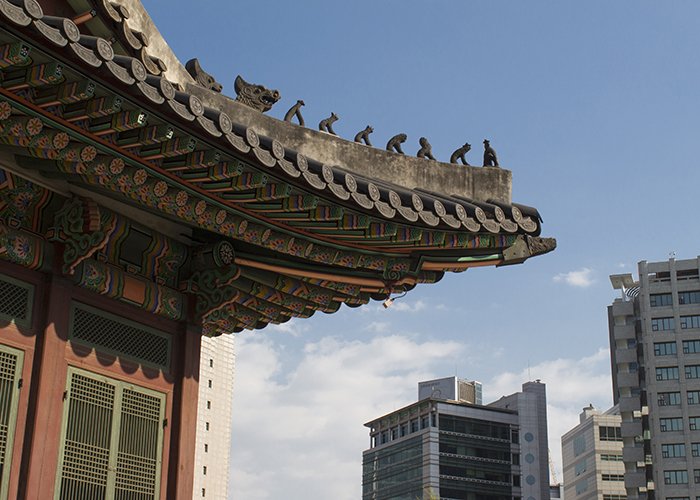 Previous Day |
Incheon, SK → Seoul, SK → Incheon, SK 70.6 mi (116.9 km) |
 Next Leg of the Trip |
What a blast from the past this morning waking up in my childhood floorspace! I was so tired, I even slept in, but not Mom! She was up and ready for Firstbud celebrations, starting with her favorite game in the world: Tuho!
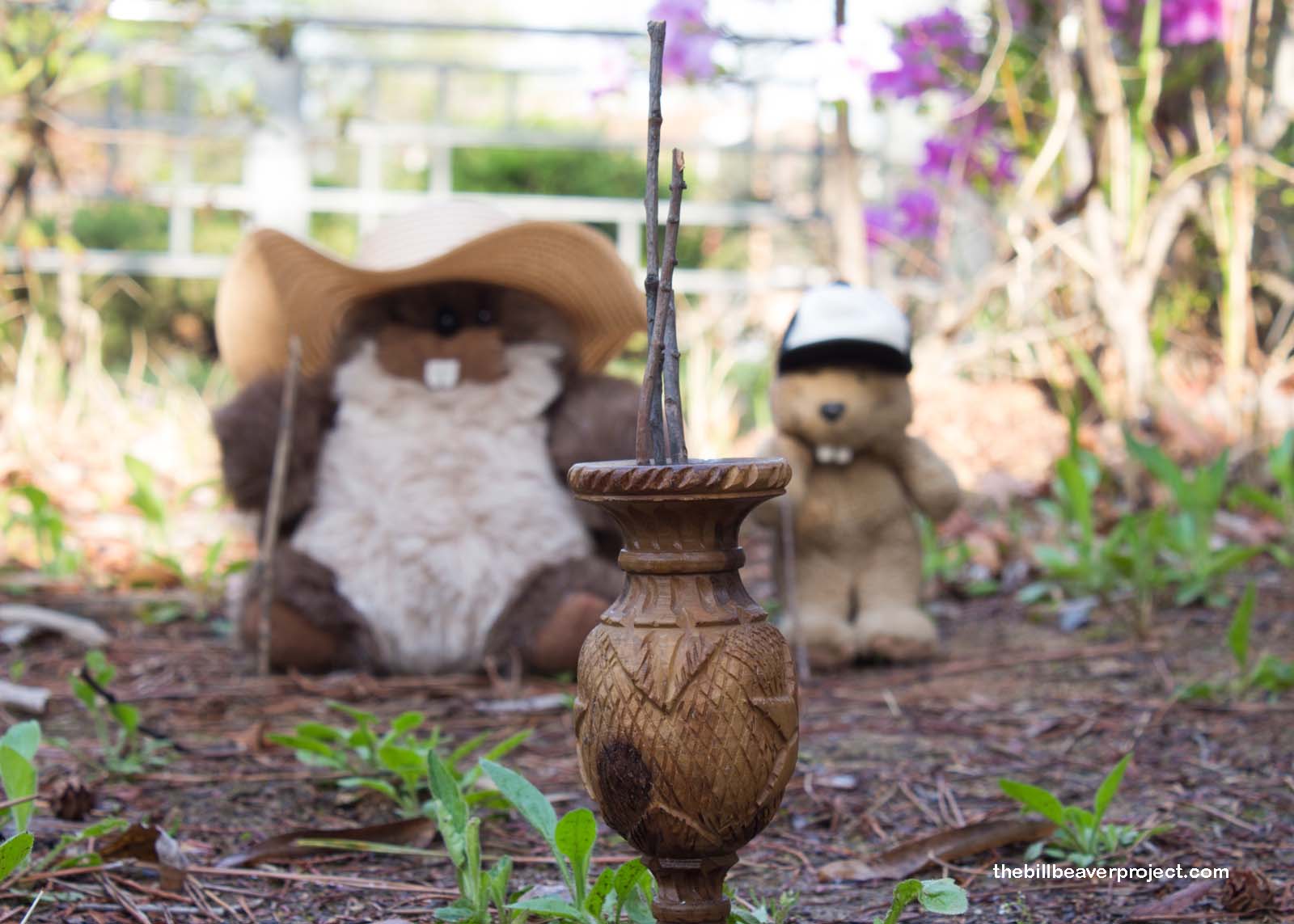 |
Tuho is an ancient game, called pitchpot in English, and the goal is really simple: get the sticks in the pot! Normally, there are two smaller hoops on either side of the main jar, but Mom started us off with a beginner’s jar:
|
|
She’s clearly had a lot more practice than I have, and she has earned her title of Hyeon! After a quick breakfast of kimchi and seaweed, we went for a walk around Neungheodae. Flower petals were falling from the trees, and happy Firstbud memories came drifting back to me.
I asked Mom if she really felt safe here with the constant danger from the North. Her response: You’ve been wrapped up too much in that 24-hour news cycle. She wasn’t scared, but she did seem interested in coming to visit me in Los Angeles. She hadn’t really traveled since coming down from Russia long ago, and a beaver can play Tuho over and over for so long! So it was settled! Mom was going to come back with me. First, though, she wanted to show me some parts of central Seoul!
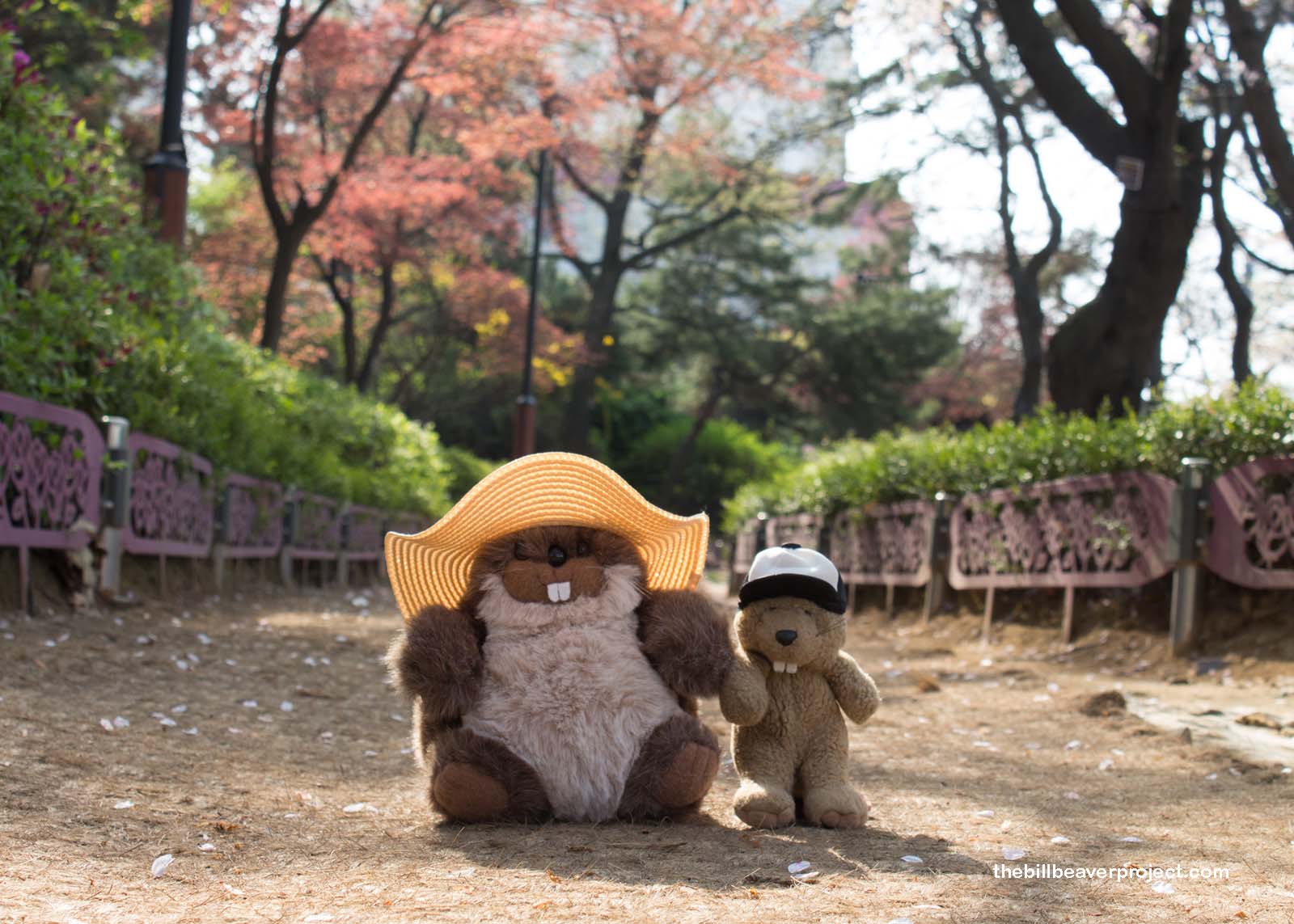 |
We hopped on the train and headed for the Jongmyo Shrine, where the ancestral kings and queens of the Joseon Dynasty are still worshipped today! This is the only Confucian shrine in the world that still practices its ancestral rites, called Jongmyo Jerye, and for that reason, it’s been recognized by UNESCO for outstanding value to human heritage!
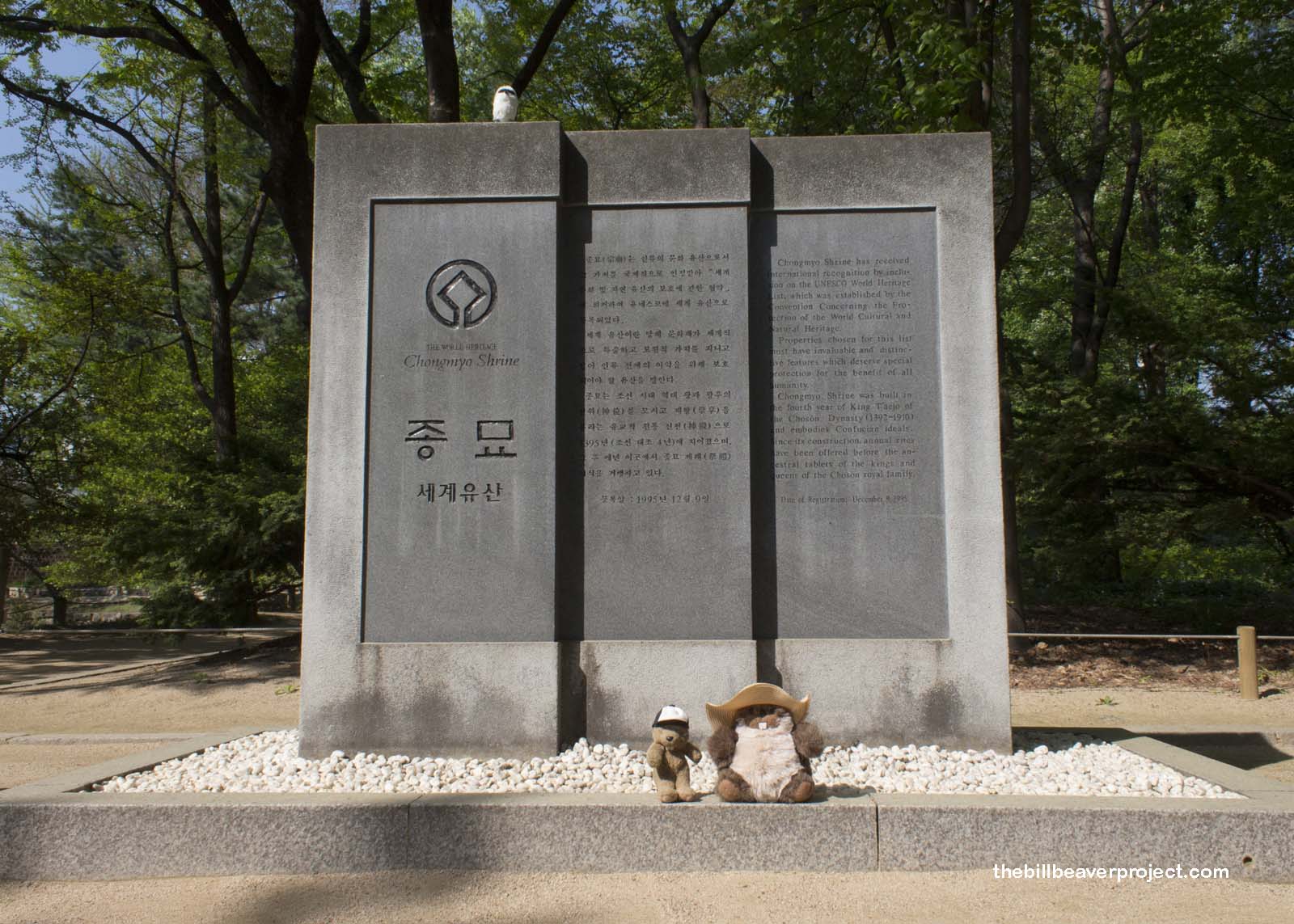 |
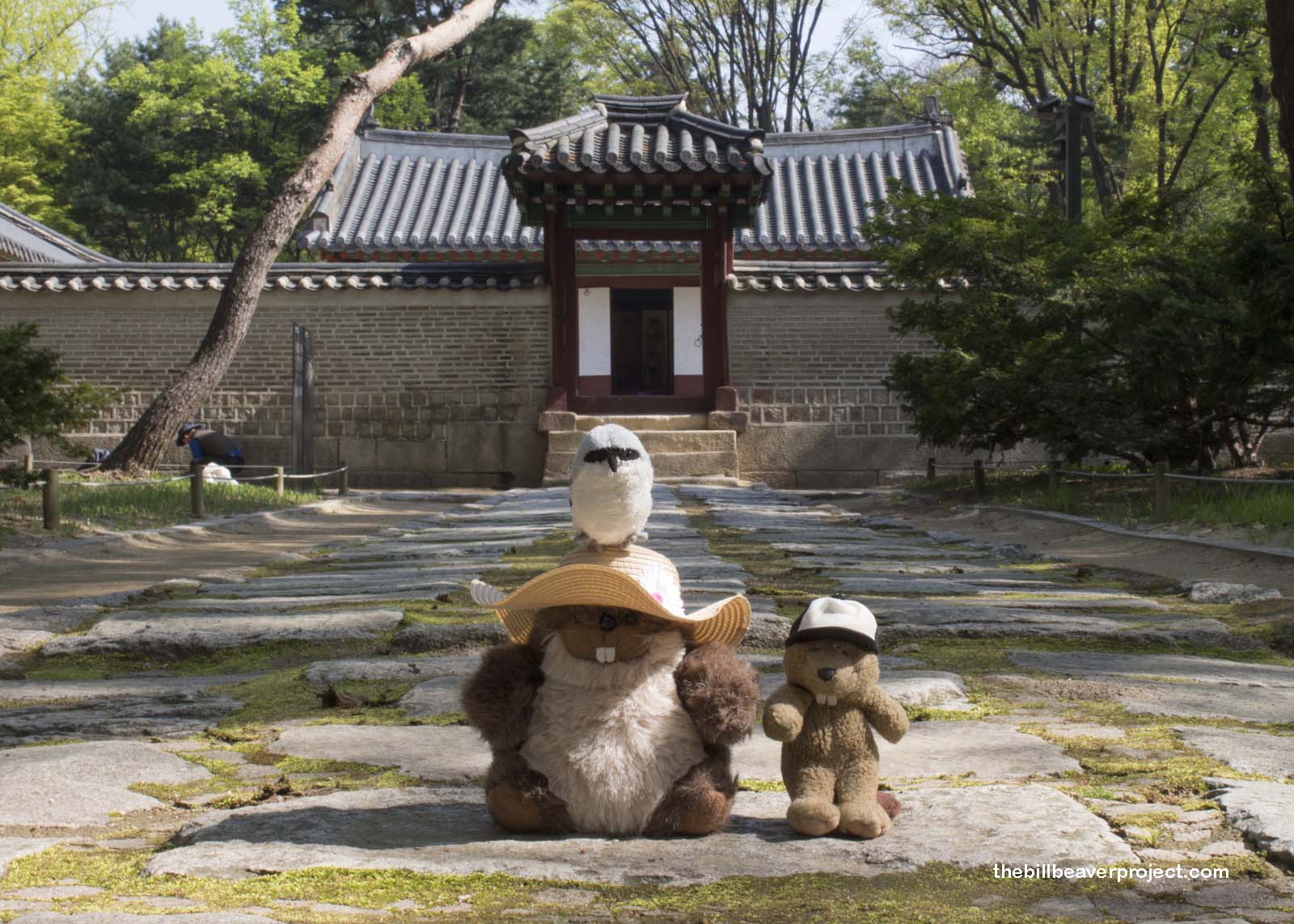 |
First, we visited the main hall, or Jeongjeon, which houses 49 spirit chambers and tablets, including that of Taejo, founder of the Joseon dynasty, Korea’s last and longest! In case you were wondering, spirit tablets are made of wood and have honorary titles for ancestors and special holes where their spirits can live! They are offered food and wine five times a year to keep them happy in the afterlife!
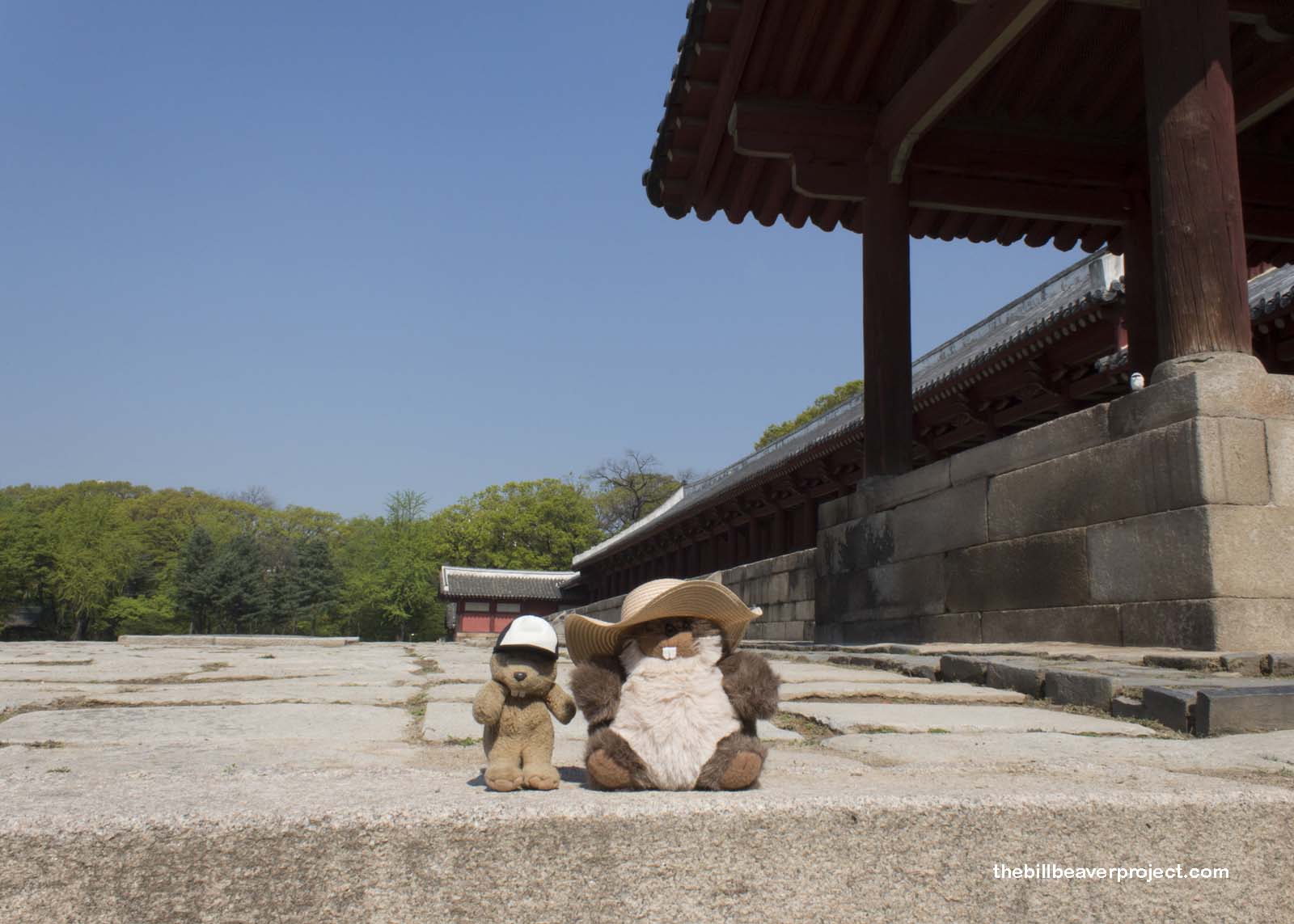 |
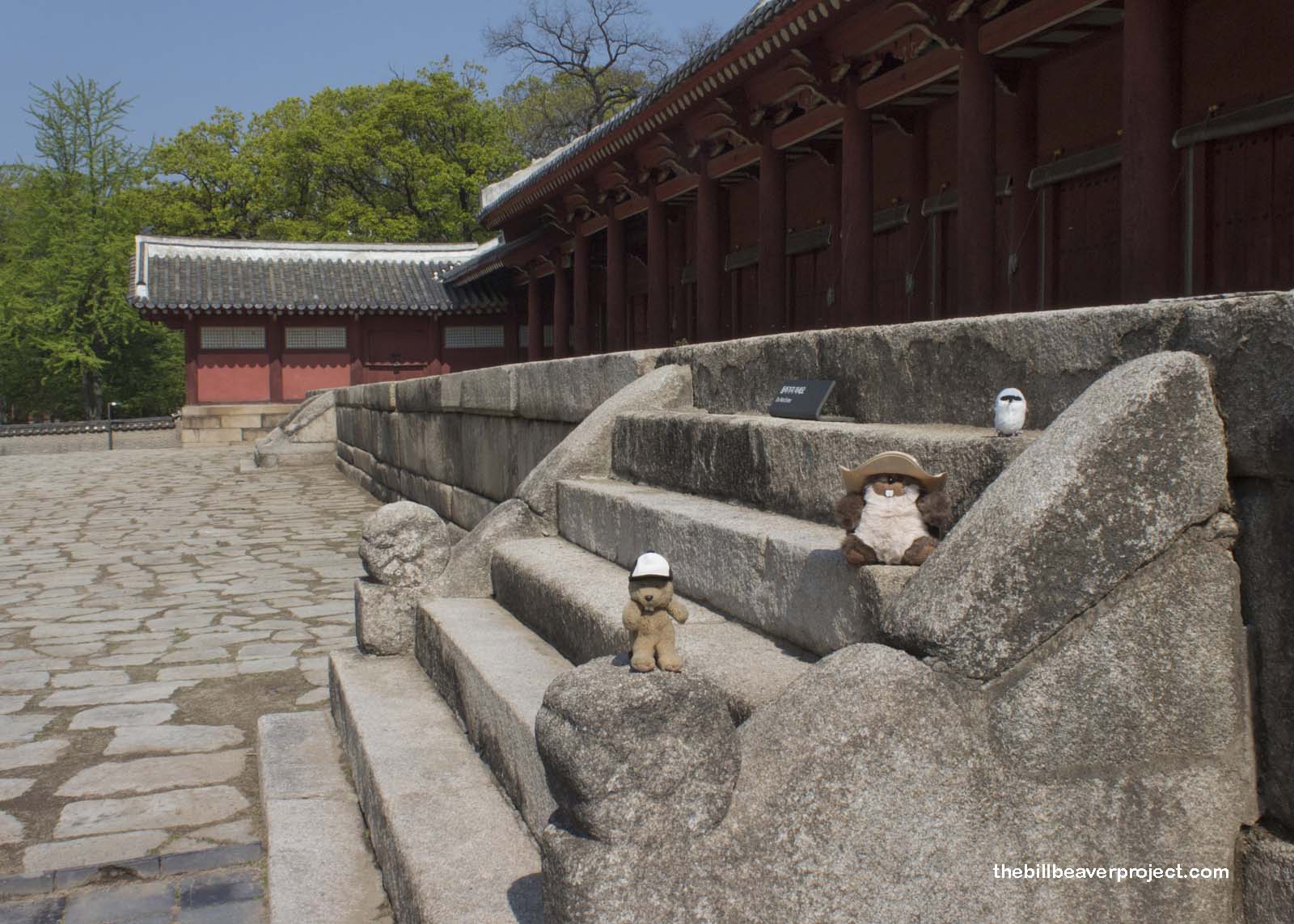 |
Next door was the Hall of Eternal Peace, or Yeongnyeongjeon, where the spirits of 34 of King Taejo’s ancestors reside. Here, they only received rituals in spring and autumn. They must have had lower spiritual metabolisms!
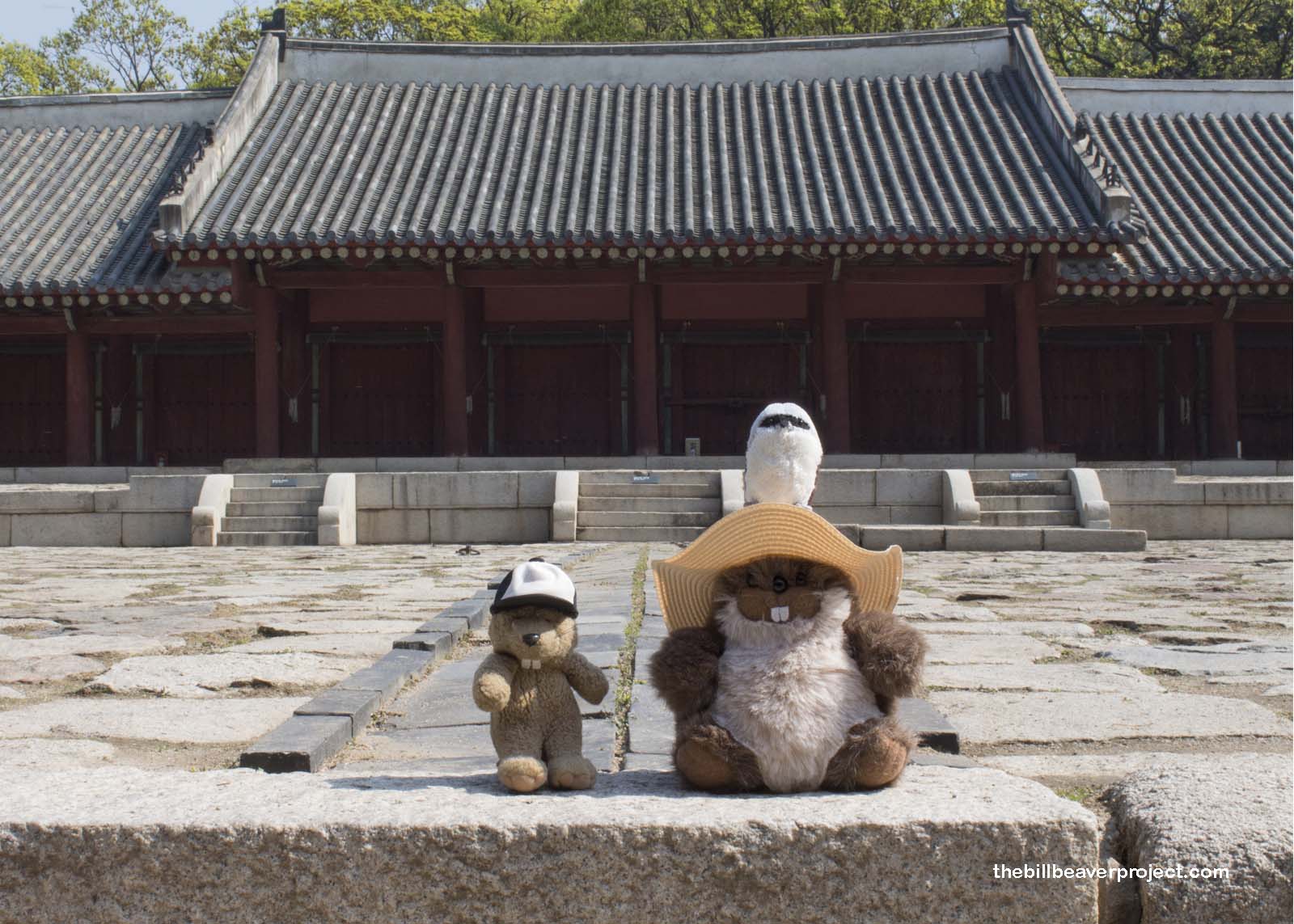 |
At the entrance, we’d purchased a multi-site ticket that gave us our itinerary for the day, so while Master Sae stuck around to meditate on his own ancestors, Mom and I headed up the street to the next site on the ticket stubs: Changdeokgung! Sometimes called Changdeokgung Palace in guidebooks, the “Palace” is actually redundant, because gung (궁) is the character used for “palace!”
It’s kind of like how “The La Brea Tar Pits” means “the the tar tar pits!”
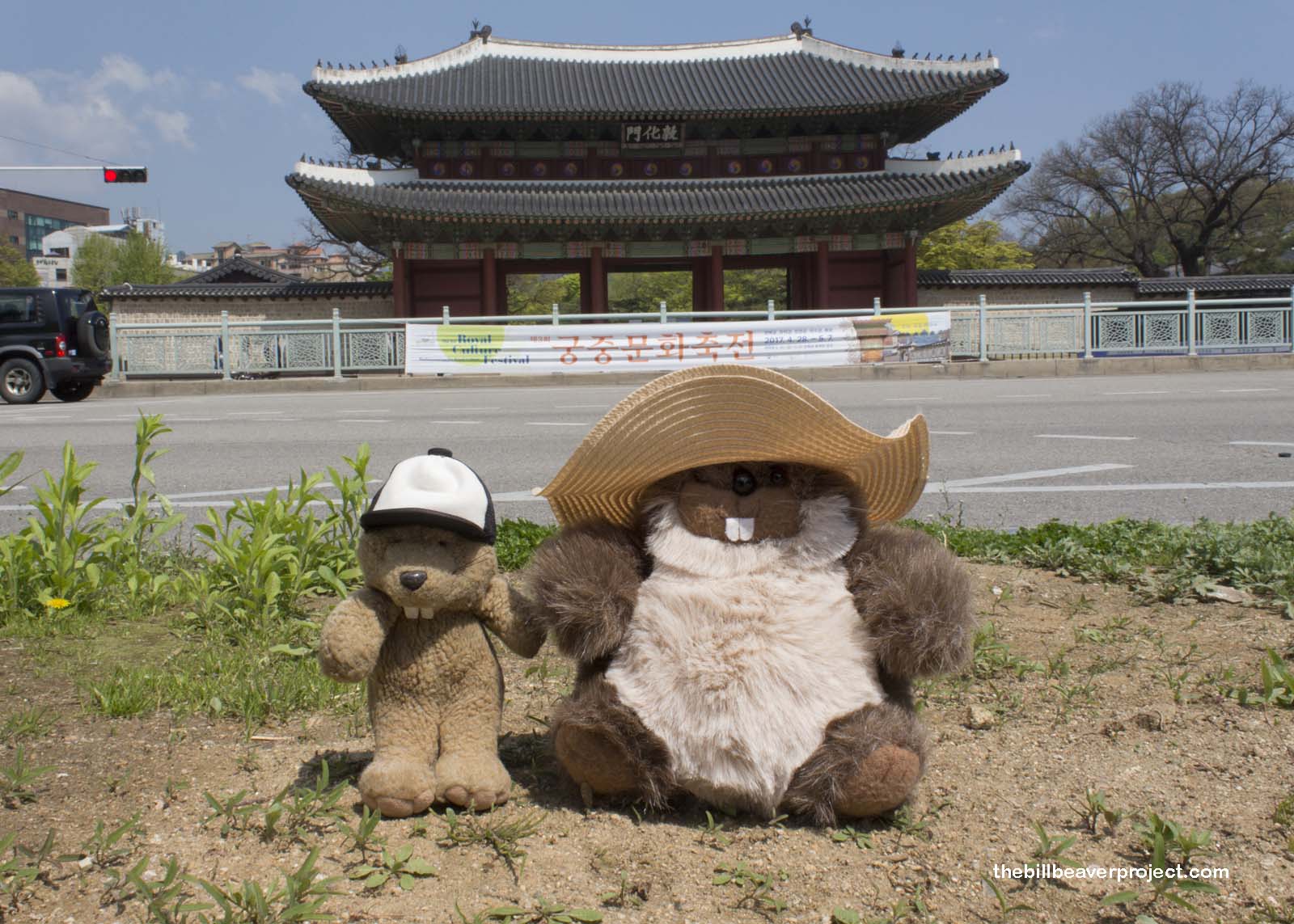 |
Anyway, Changdeokgung was built in 1405, and I immediately saw the architectural similarities to China’s Forbidden City, down to the nine mythical guardians lining each roof corner! That’s because Korea had housed Chinese military colonies during the Han Dynasty and had held strong cultural ties to China during the Tang Dynasty!
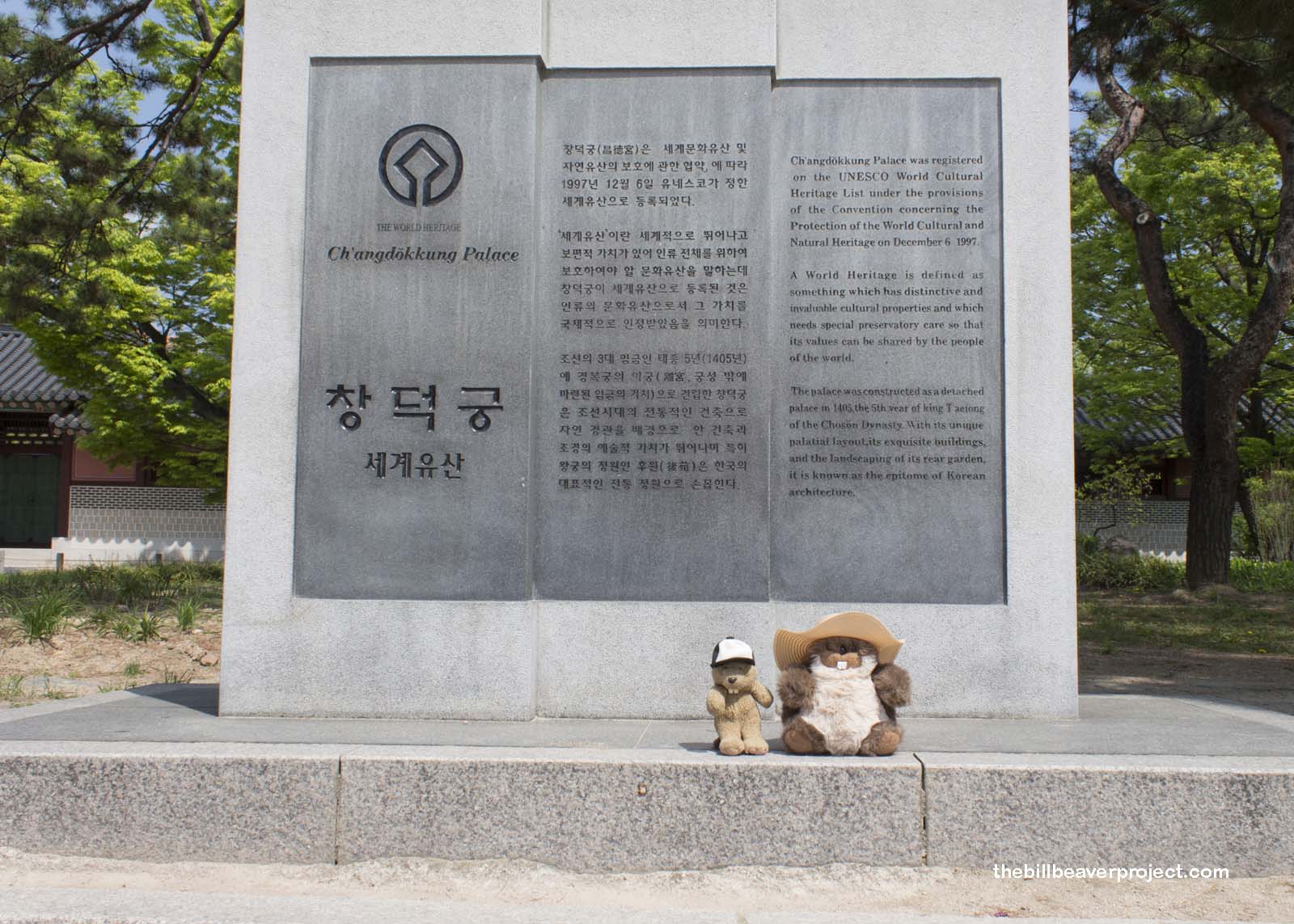 |
Peeking into a secluded corner of this complex, we discovered two raccoon dogs, or neoguri, enjoying a siesta in the sun! Raccoon dogs have an almost mythical status, especially in Japan, where they are called tanuki! You’ve probably seen Super Mario flying around in a tanuki suit! Unfortunately, other folks like wearing tanuki suits so much that their fur is often sold as “fake fur” to fool animal lovers! Mom and I decided it was best to leave these two to their nap!
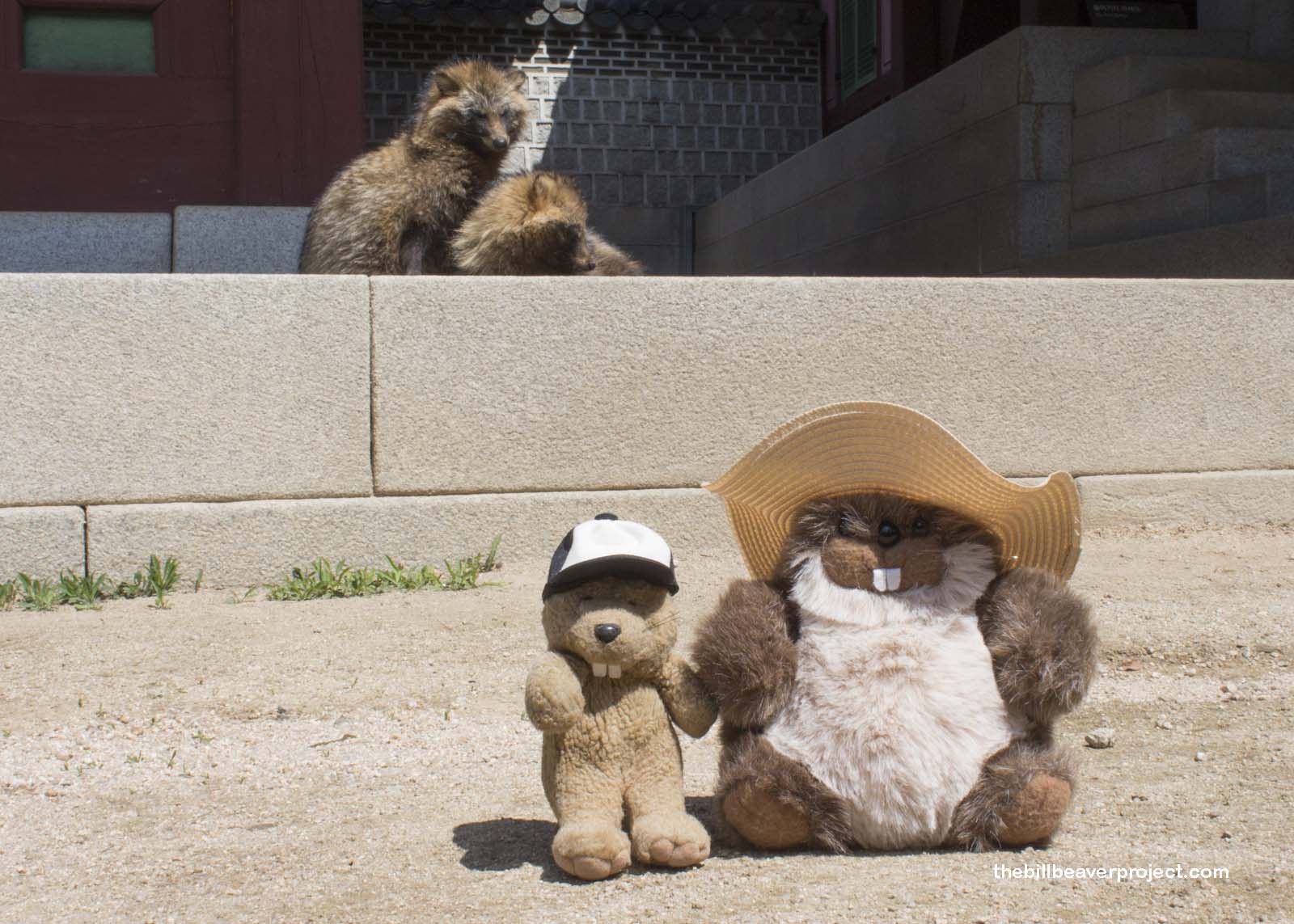 |
Around the corner, we found the Injeongjeon, the Throne Hall, where the king held most of his formal business. This whole place was burned to the ground during the Japanese invasion of 1592 but was rebuilt in 1610 and became the main palace of the Joseon Dynasty for 270 years!
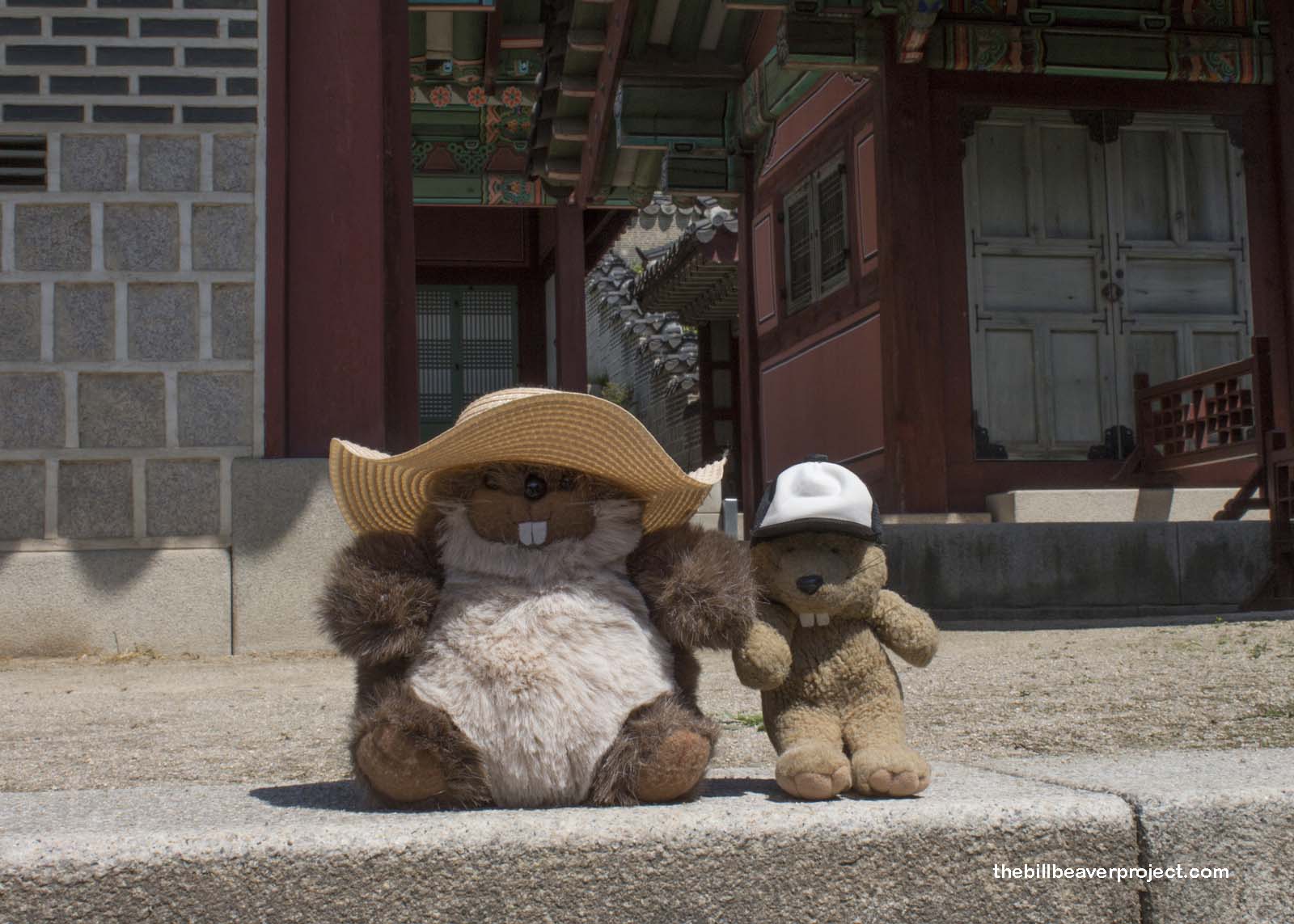 |
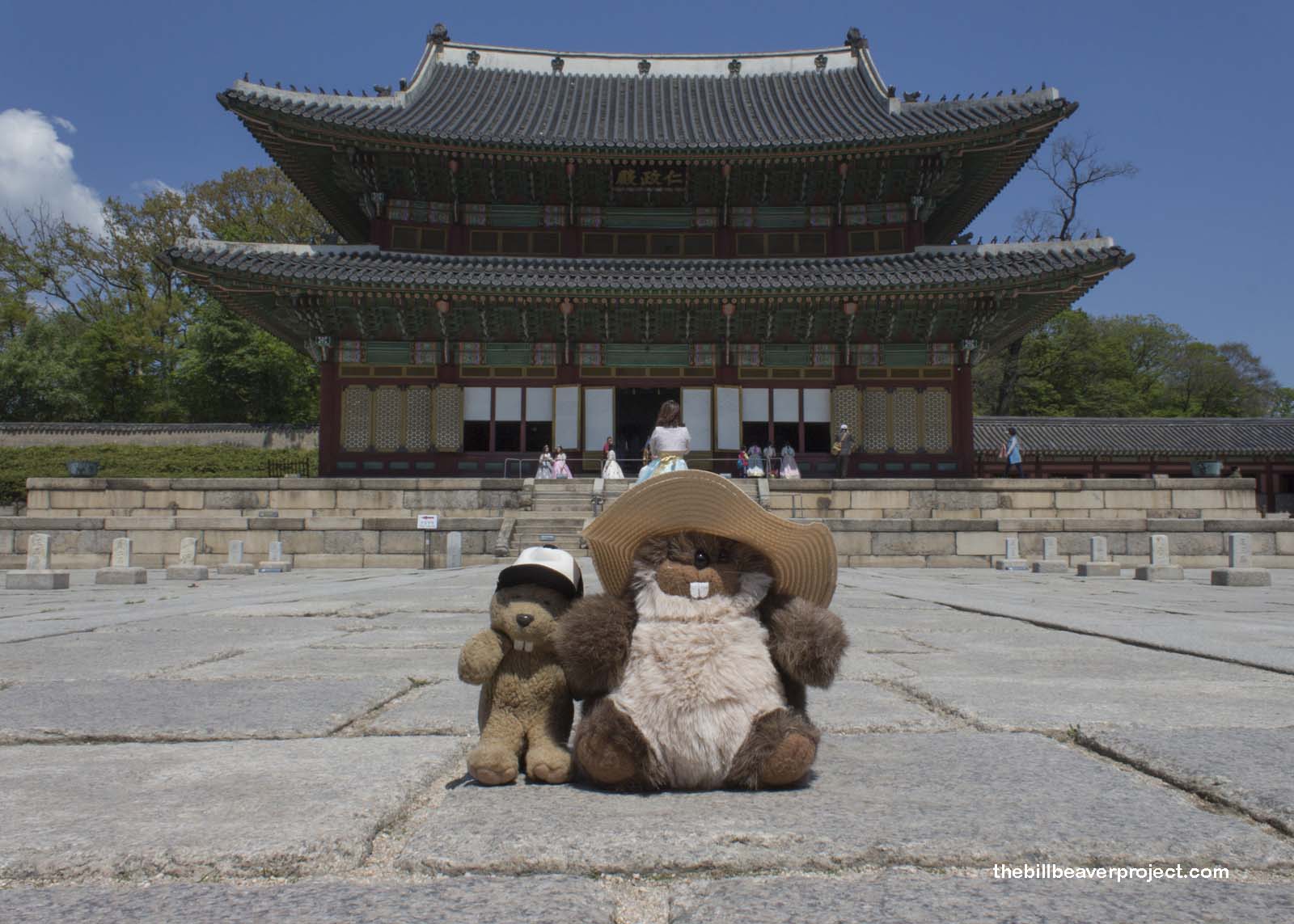 |
Behind this palace complex, however, is the most spectacular garden of the Five Grand Palaces of Korea! Called the Secret Garden, or Huwon, these blossoming grounds were a place where kings and queens could relax and try their hand at growing grain, producing silk, or just having archery contests!
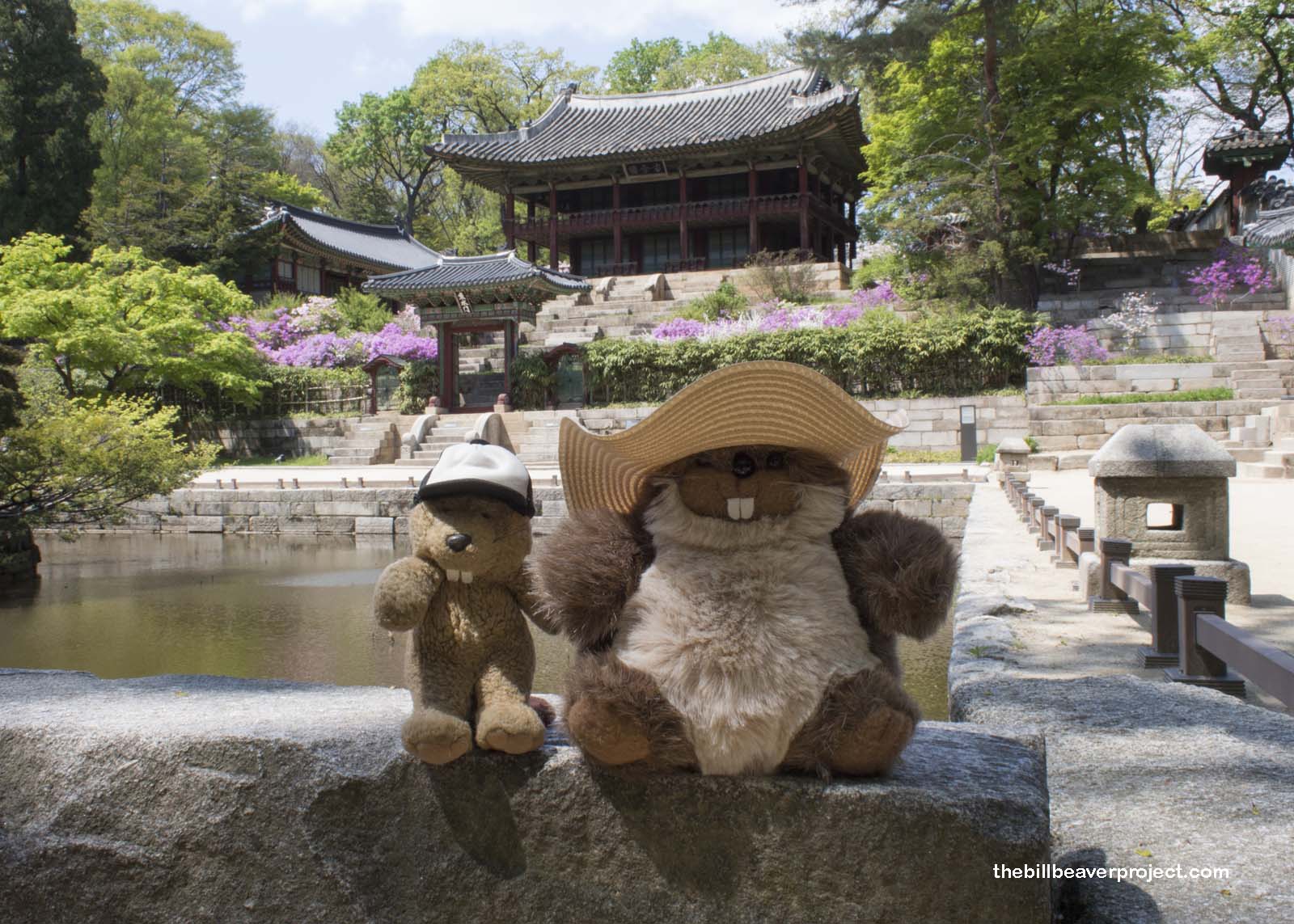 |
Mom and I wandered through this secret garden, dazzled by the amazing flowers: rhododendrons and cherry blossoms galore! The landscape here flows with the natural surroundings, and the flowers accentuate the architecture as if they were always supposed to be together. They sure beat the Firstbud flowers of southern California!
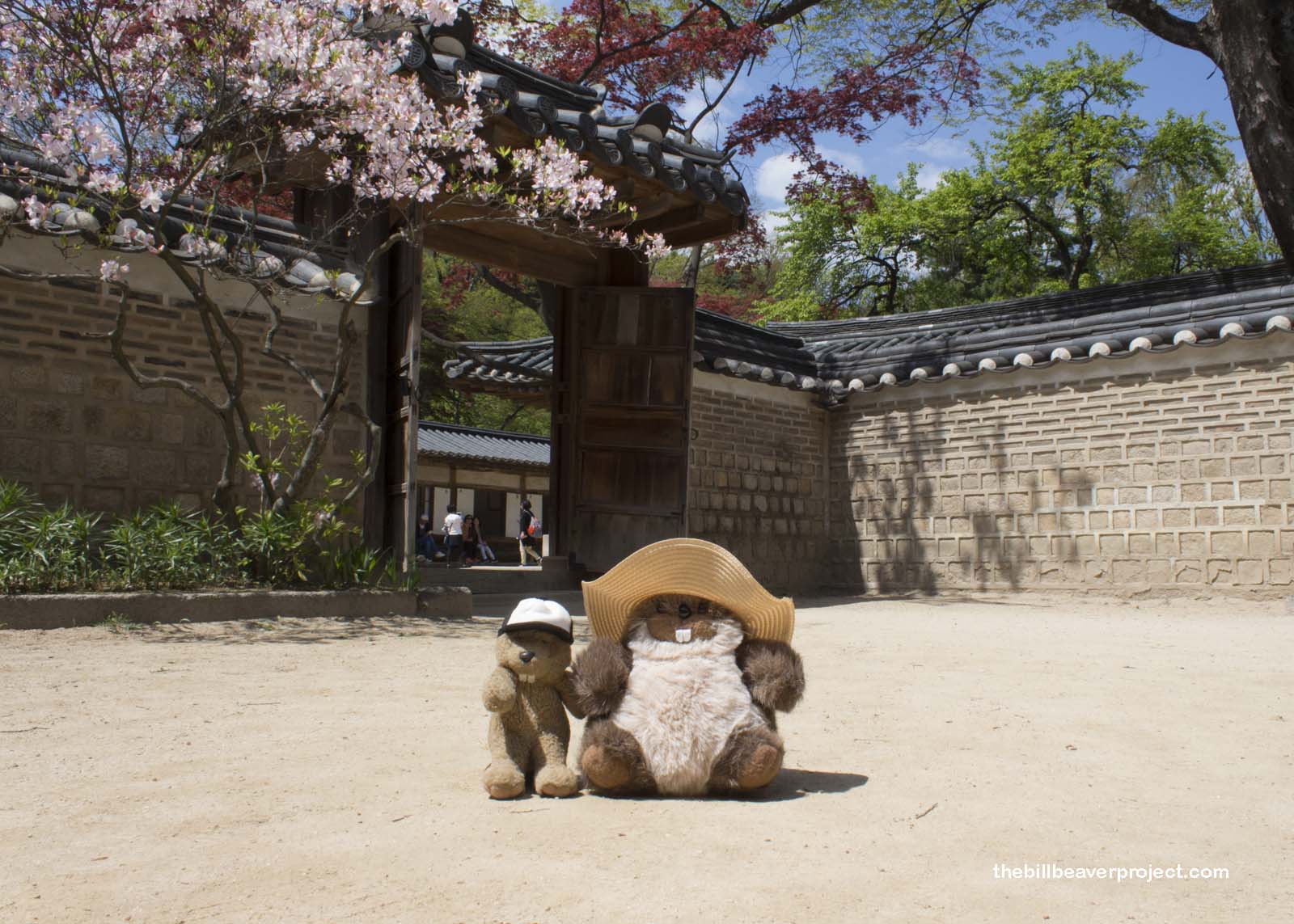 |
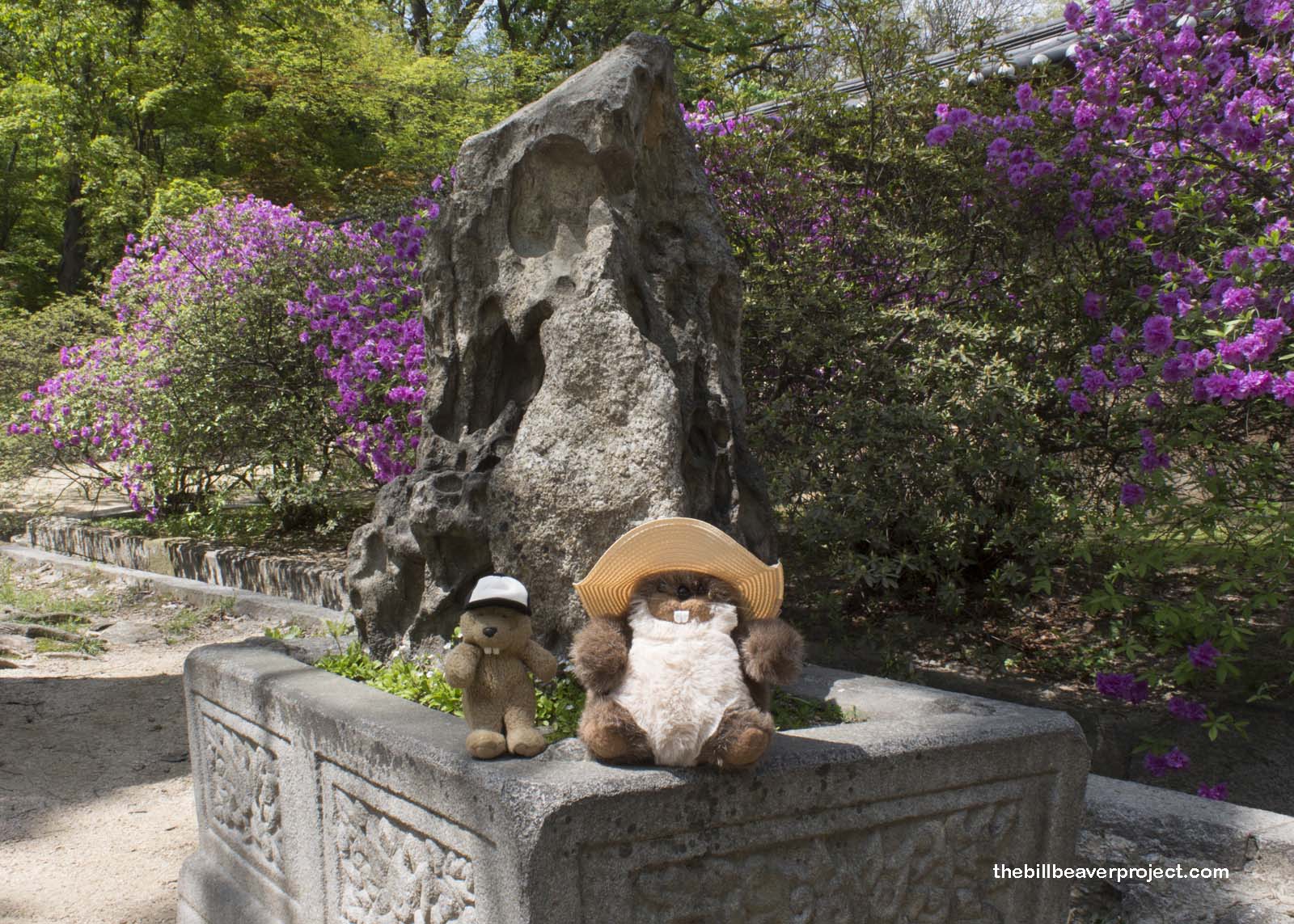 |
Next door, Changgyeonggung turned out to be a smaller complex, built by King Sejong for his retired father, King Taejong, in the early 15th century. In time, it became a residence specifically for queens and concubines! The unique thing about its main hall, the Myeongjeongjeon, is that, unlike the other palaces, it faces east, not south. That’s because it’s directly north of the ancestral shrine of Jongmyo, and Confucian custom dictates that you can’t have a palace entrance facing your ancestors!
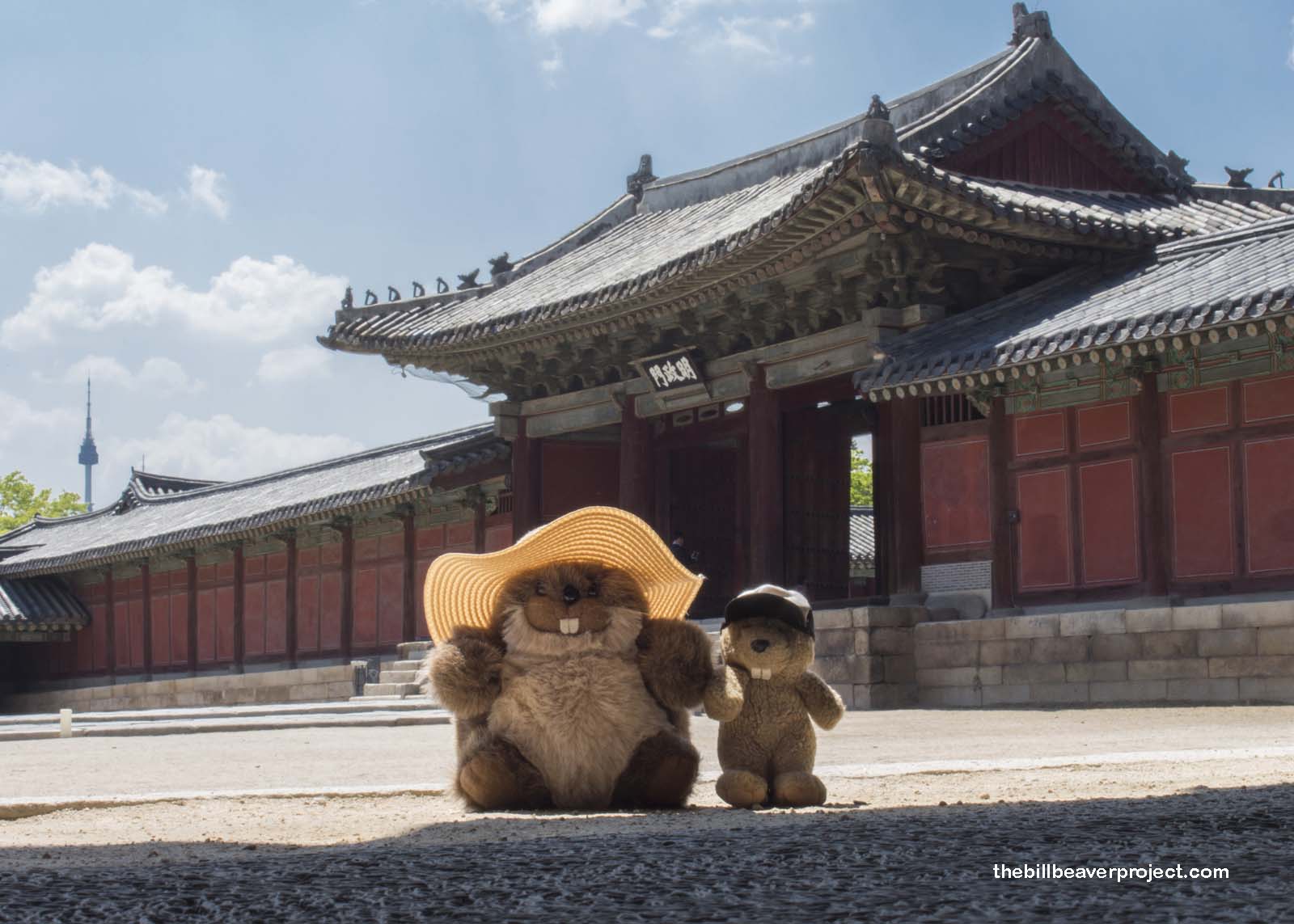 |
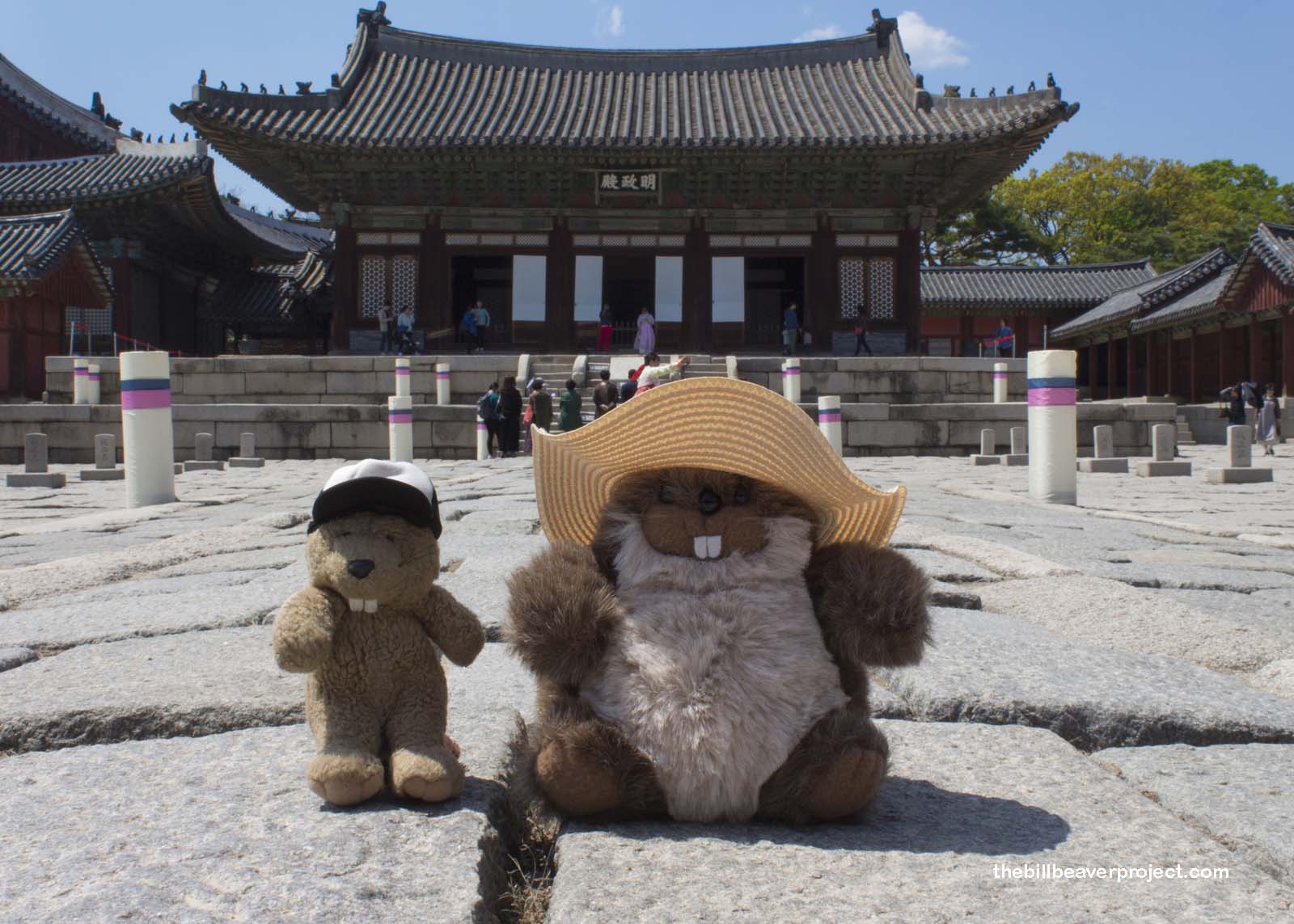 |
Since Changgyeonggung and Changdeokgung both made use of the fabulous gardens in the back, they were collectively known as the Donggwol, or “East Palace,” to bring balance to the city’s major palaces, chiefly the Western Palace, which was next on our list!
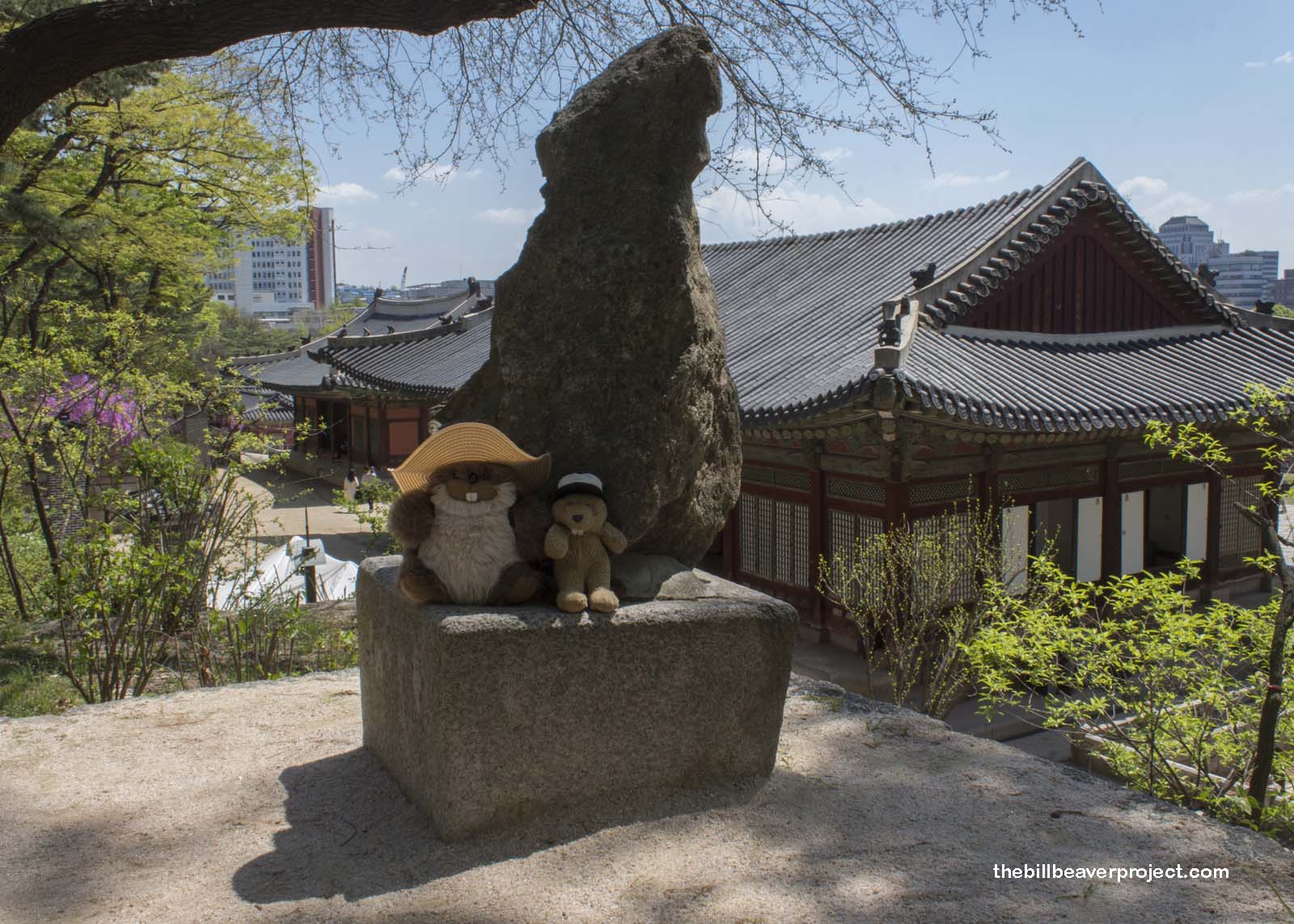 |
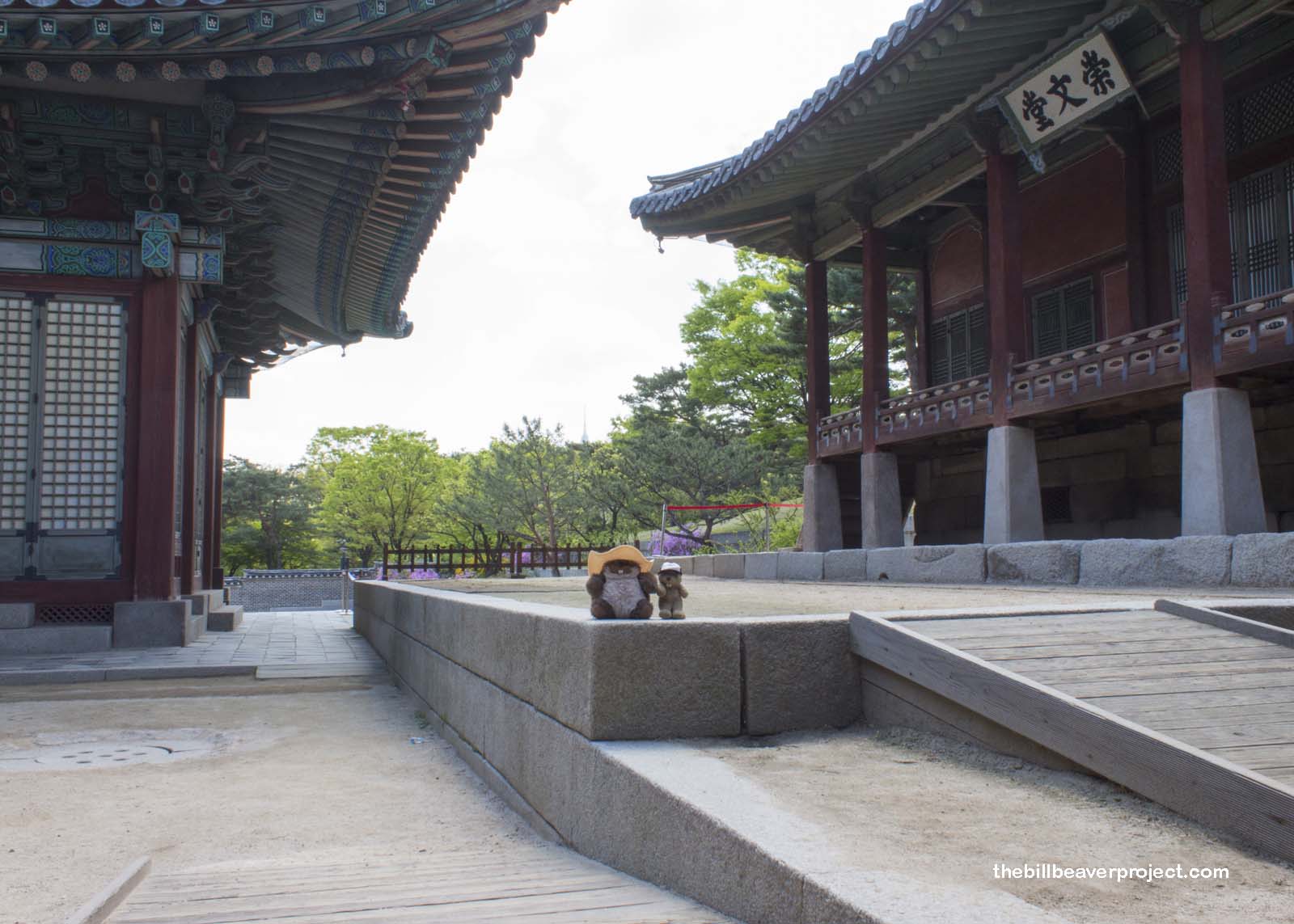 |
We wandered west down the hot sidewalk, snacking on some tasty red bean buns from a street side bakery handing out samples. Flowers bloomed abundantly on all sides, and while folks were out in abundance, I was surprised that the crowds were not as suffocating as I expected. That changed when we got to Gyeongbukgung!
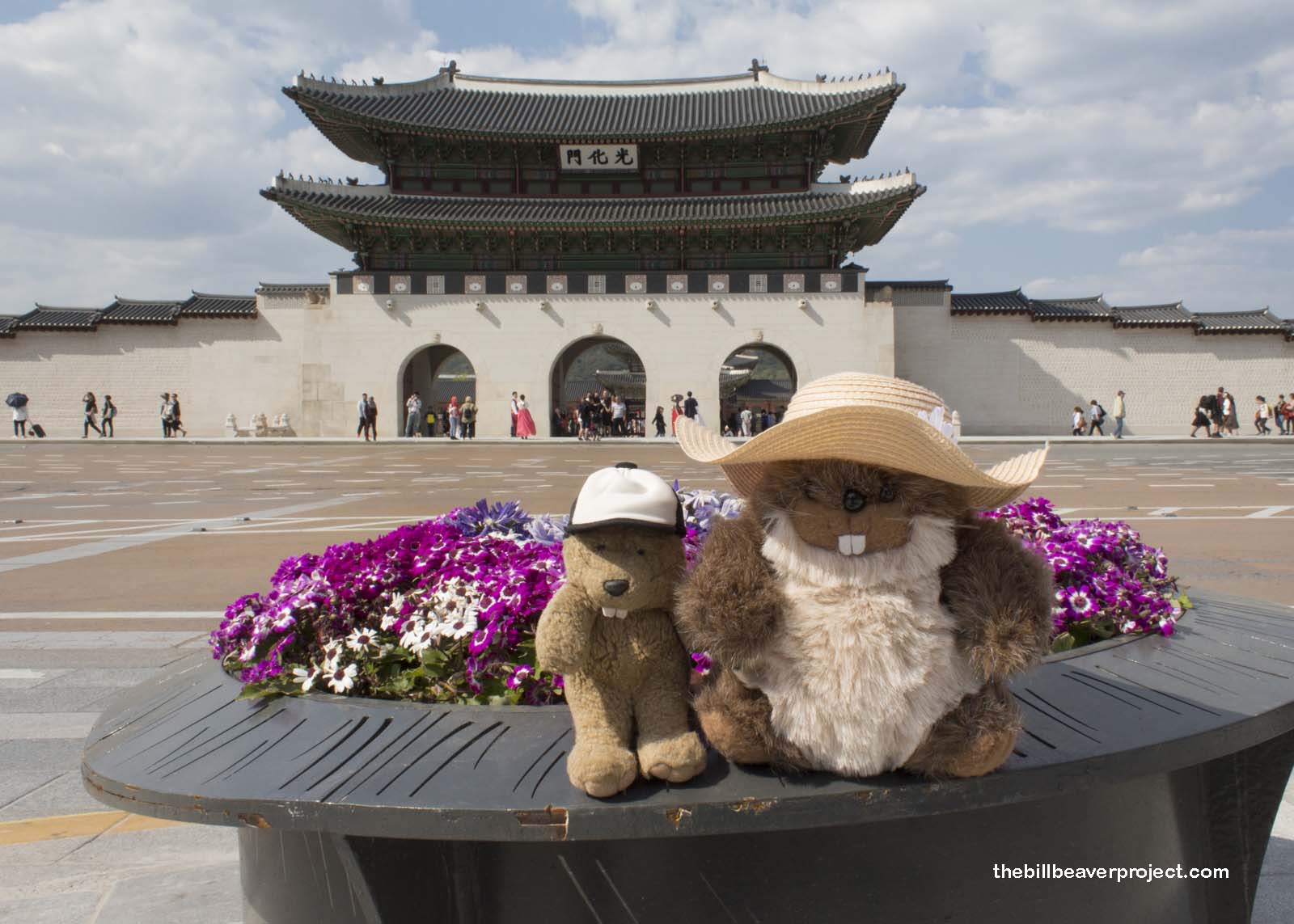 |
We arrived just in time for the changing of the guard ceremony at the Gwanghwamun Gate! When the Joseon king resided here at Gyeongbukgung, sentries at the gates were assigned day and night shifts, and when the shifts changed, the guards would swap out with great pomp and circumstance. After careful research, the ritual was brought back in 1996 and now happens Wednesday through Monday at 10:00 AM and 2:00 PM!
 |
Right before the ceremony finished, Mom and I snuck back toward the main palace, thinking there would be a break in the tour bus crowds. We were partly right. Tons of folks crowded together for selfies in front of the main throne hall, and for good reason. It was huge! It towered over the past two halls combined and was surrounded by neat carvings of animals like roosters and tigers! This was also where the most international crowd could be found, and Mom and I got to meet Pooky the bear, who had traveled here all the way from Hong Kong!
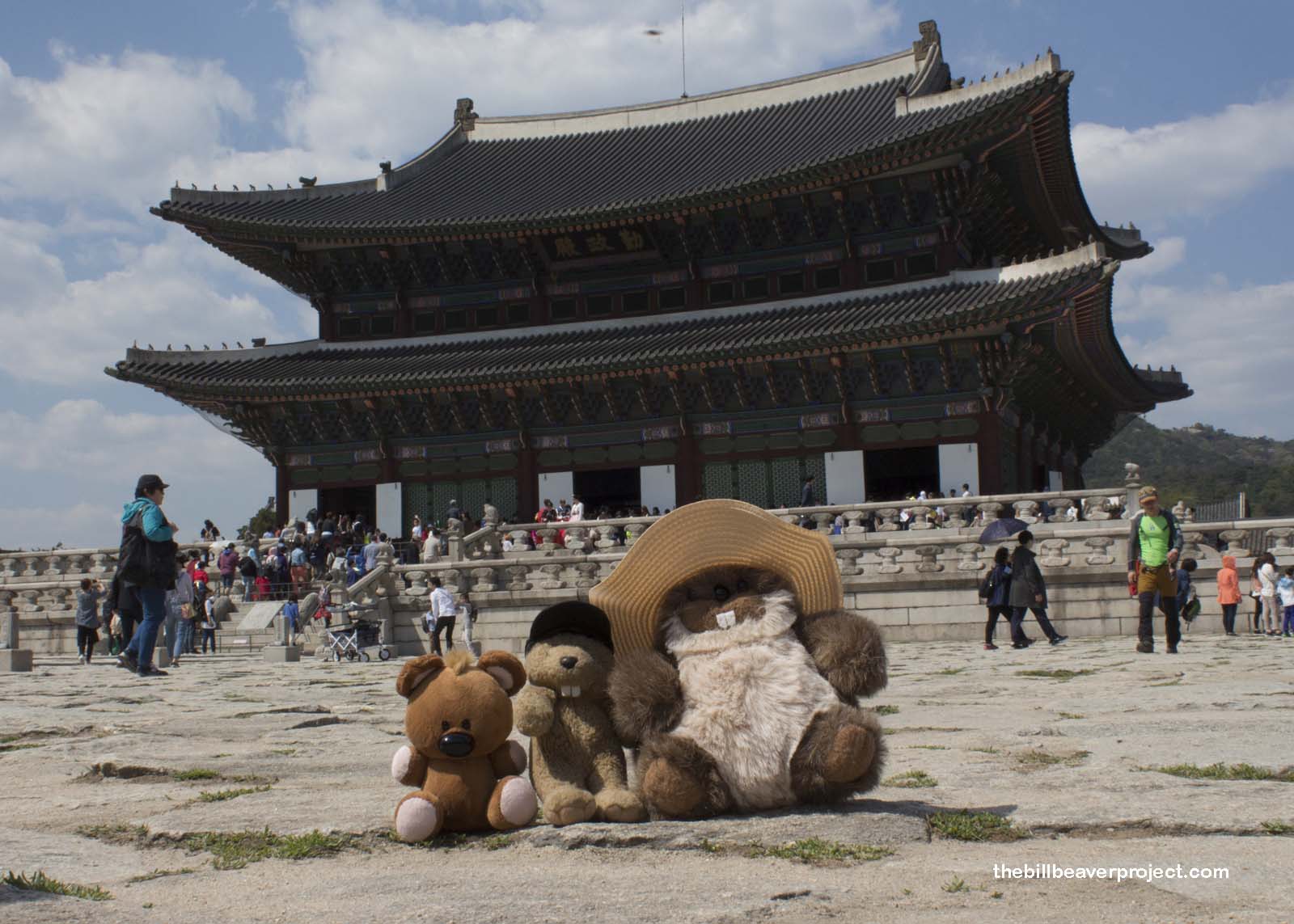 |
As we headed back into the palace grounds, the crowds filtered out a bit, and we got to see more of the details of this largest of the 5 Grand Palaces of Seoul. Built in 1395, this was meant to be the main seat of Korean power, but once it was burned down by the Japanese in the 1590s, it sat in ruins for almost three centuries! It wasn’t until 1867 that Prince Regent Heungseon ordered its reconstruction and put in place a small city instead of just a palace!
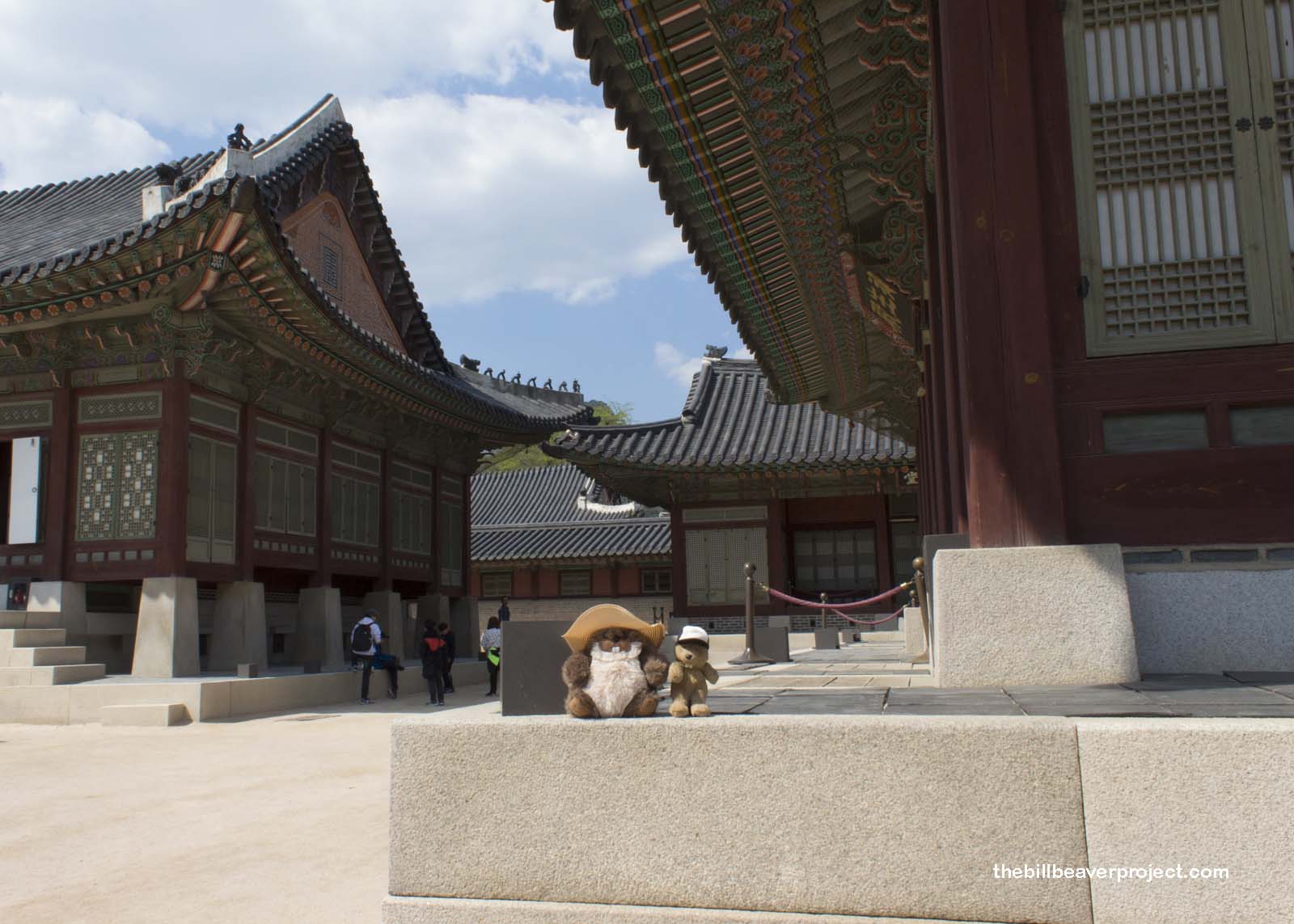 |
Out back, the garden was bursting with Firstbud blossoms, though we had to wait for the gardeners to get out of our photos. They did a very thorough job, though. A very, very, very thorough job! Luckily, there are few things to make waiting more bearable than a garden of lovely flowers!
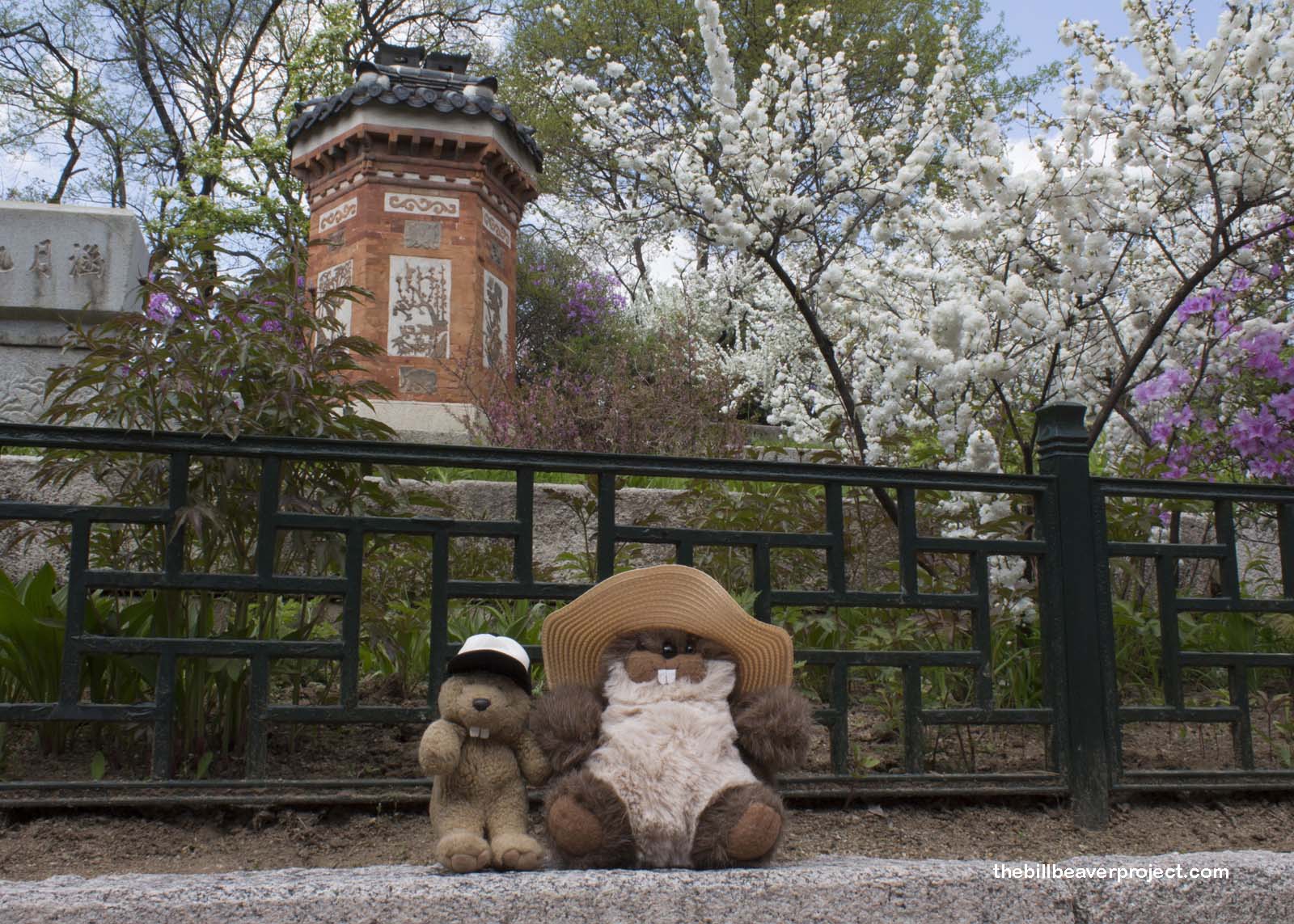 |
Lastly, we strolled past the Gyeonghoeru Pavilion, where the kings used to hold their banquets! This huge pavilion stitched out onto a manmade lake, which reflected the mountain, Bugaksan, in the background, a very auspicious location indeed! This would have been the perfect place to host Firstbud festivities back in the day, but technically no one is allowed inside the pavilion!
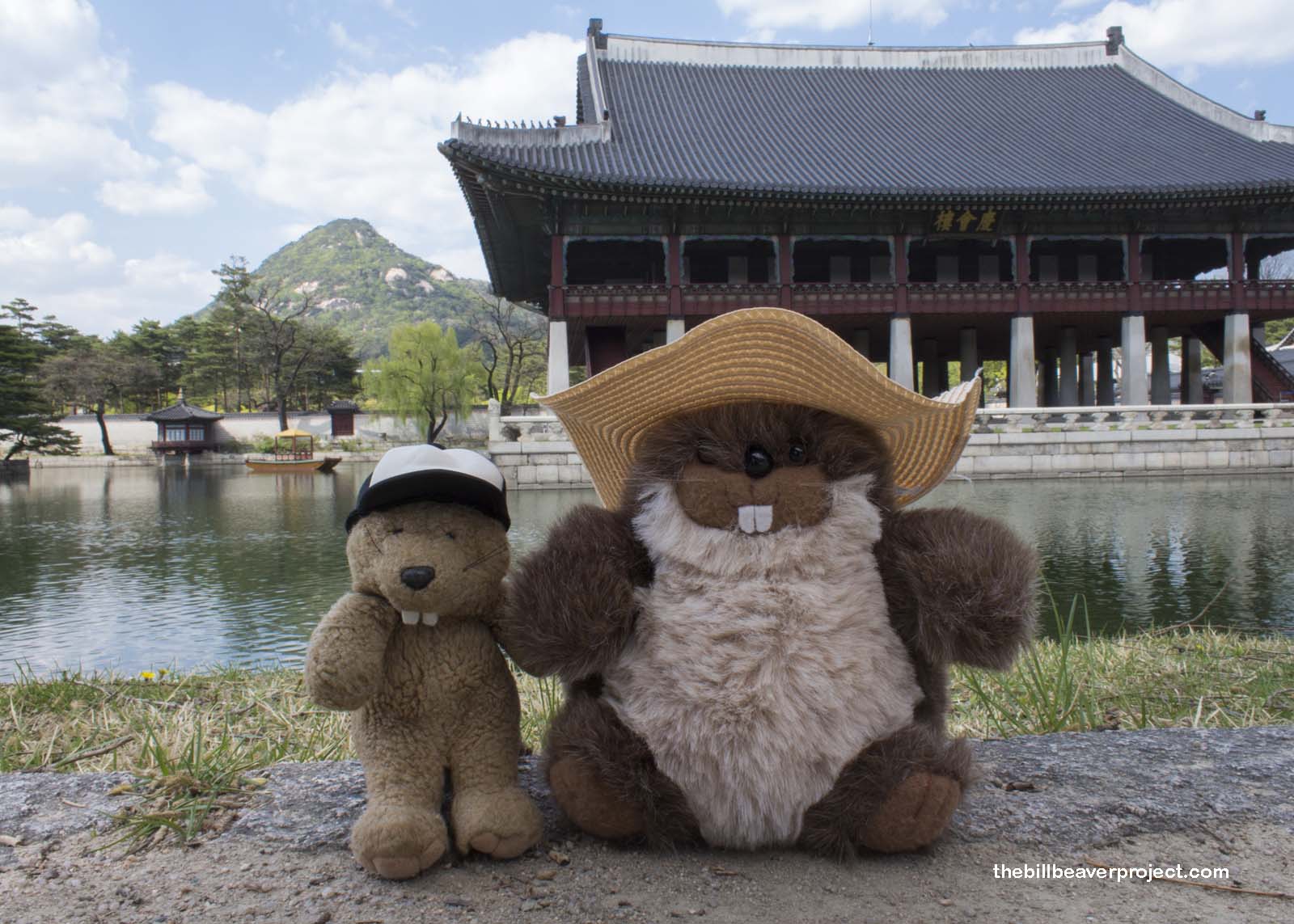 |
With closing times coming up quickly, we had to hustle to the last stop on our multi-site ticket. We hurried south through Gwanghwamun Square, where Earth Day festivities and political protests were both gearing up to make a splash, until we reached Deoksugung!
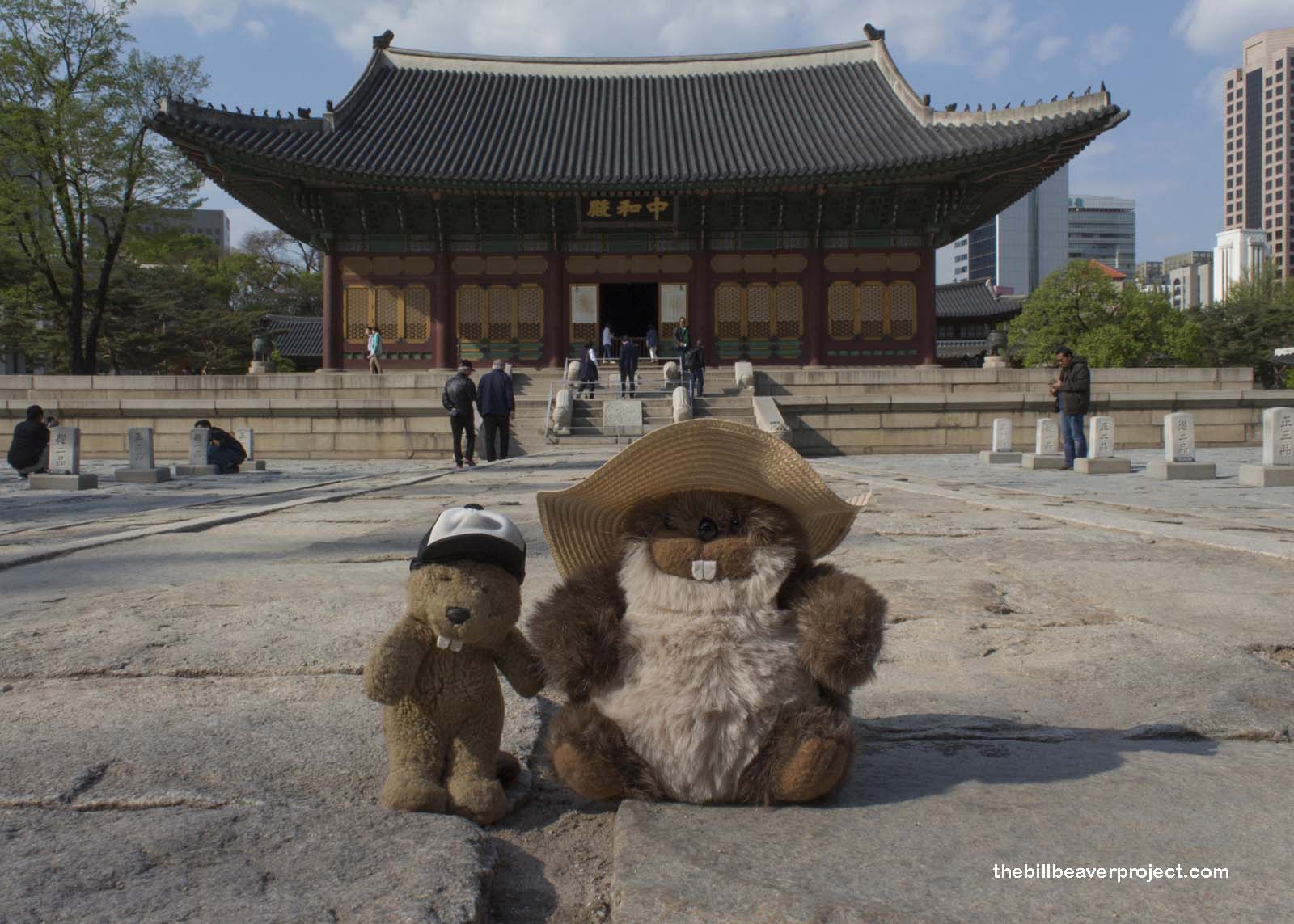 |
This tiny palace, surrounded by skyscrapers, originally belonged to Wolsandaegun, older brother of King Seongjong, in the mid 1400s. After the Japanese invasions of 1592 and 1598, it became the headquarters of the Korean monarchy because all of the other palaces had been burnt down! Today, seated next to Seoul’s City Hall, the Deoksugung complex is a fascinating blending of ancient and modern architecture!
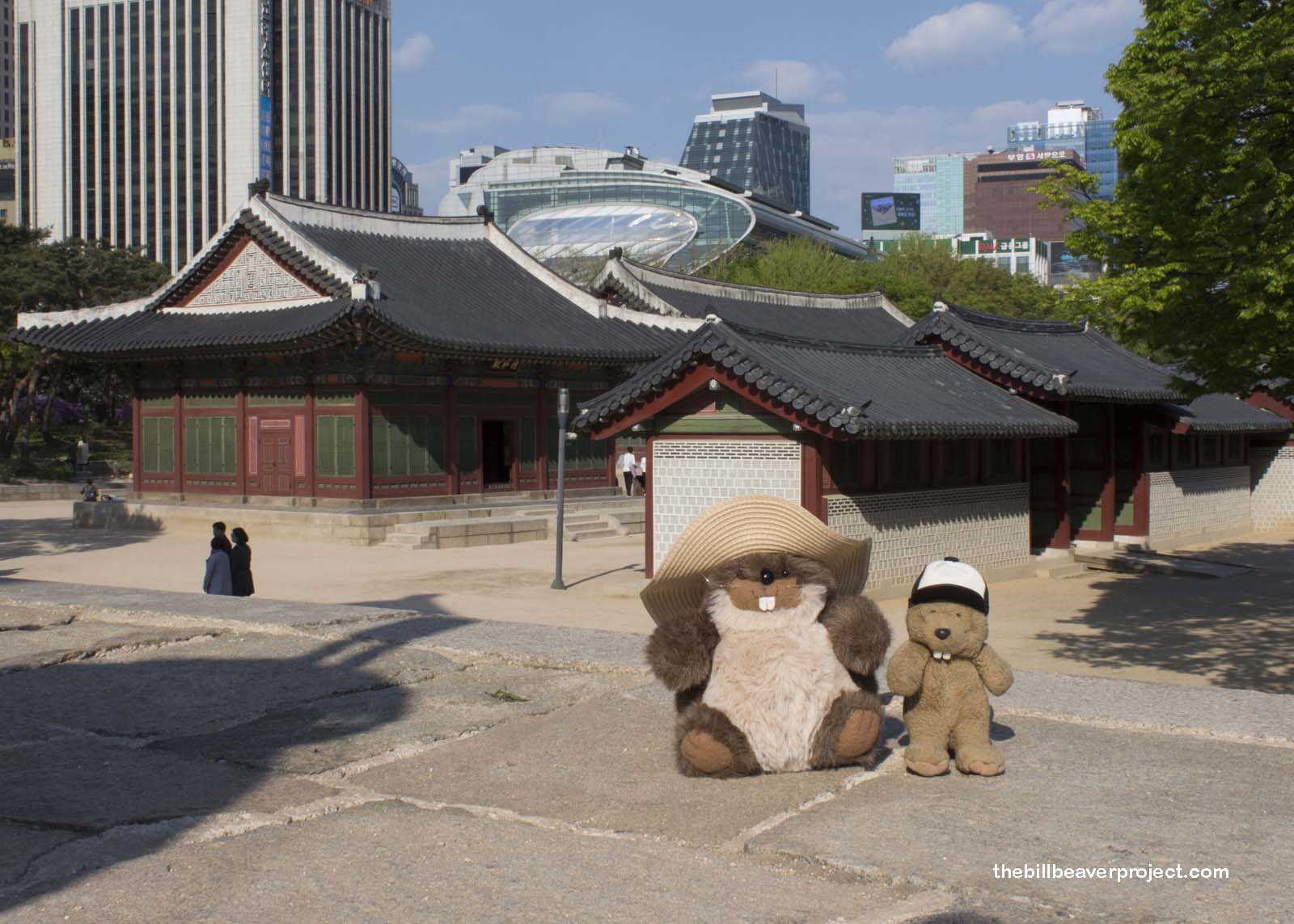 |
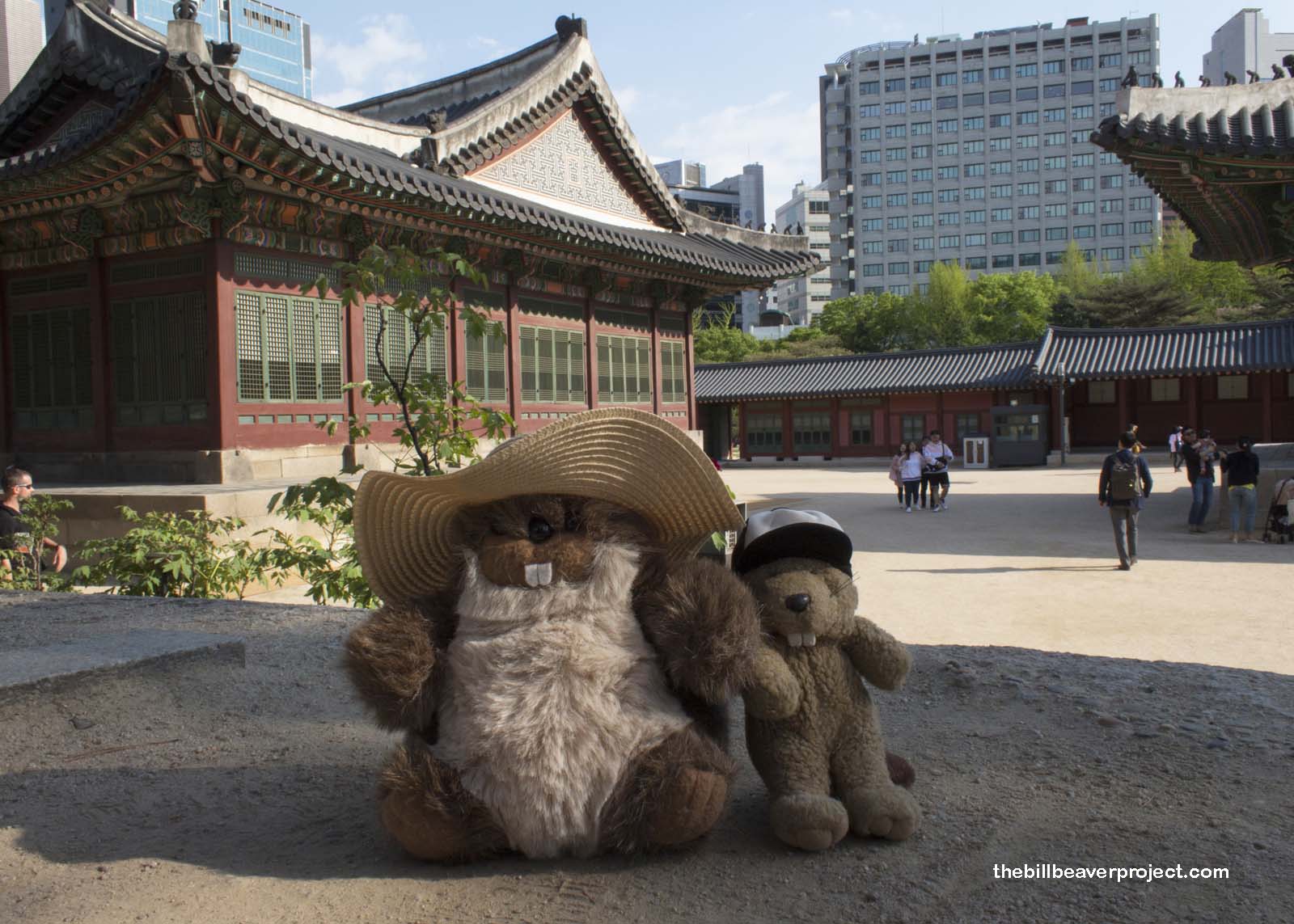 |
After a short walk around the complex, Mom and I paused to enjoy some more Firstbud flowers around the buildings. She asked if the flowers were as pretty in Los Angeles during Firstbud. We don’t have much in the way of rhododendrons, but we’ll see what she thinks of jacarandas!
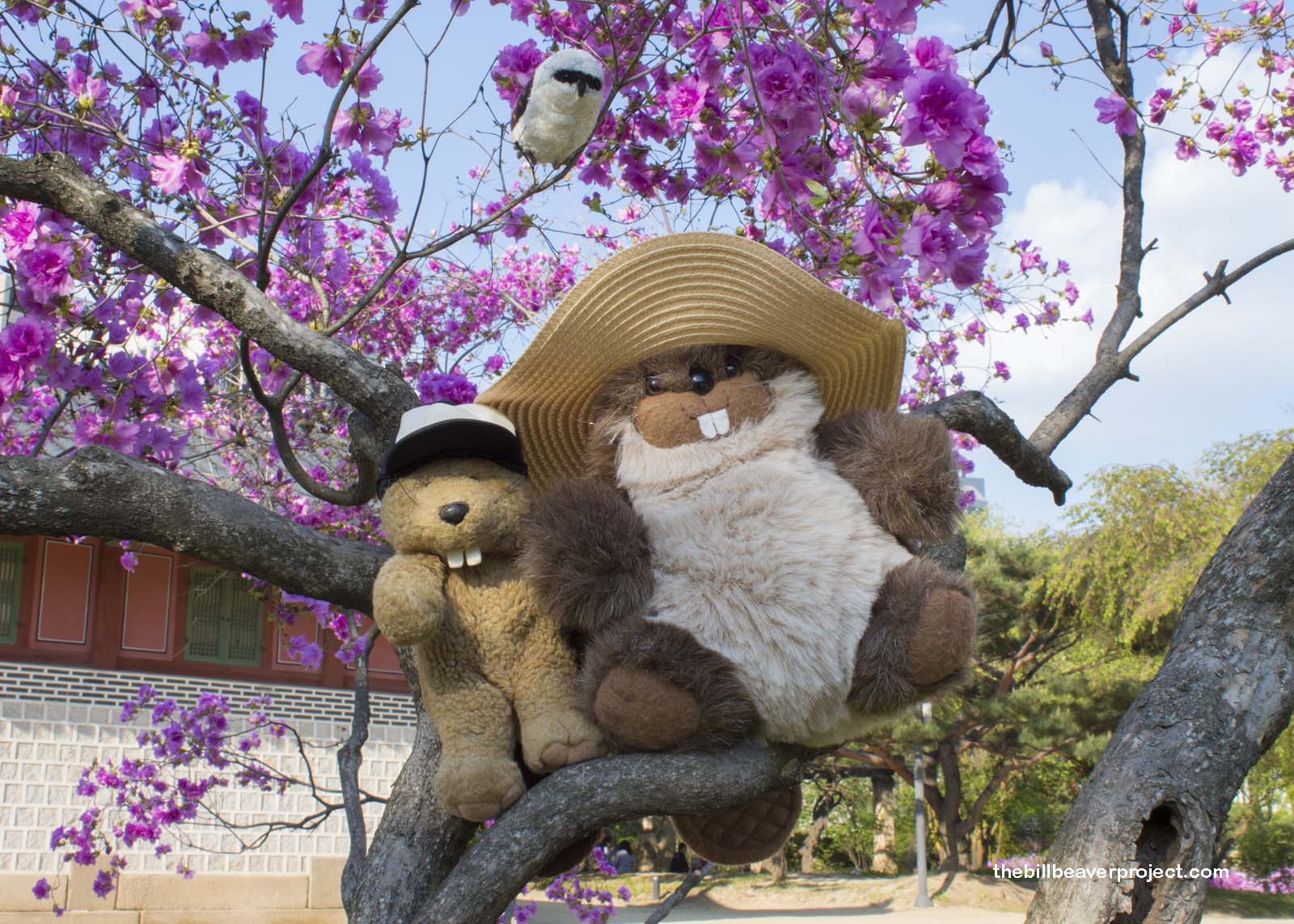 |
At that moment, Master Sae reappeared! He was happy to hear that I would be giving Mom a tour of Los Angeles, but first he had a request. He just couldn’t forget that I’d told him about a Sixth Deadly Art, the Durian Belch! Before we headed across the Pacific, Master Sae asked me to find him a durian for experimentation.
Mom said it would take her a few days to pack her things, and she had a Tuho Club meeting tomorrow, so she directed me onto the AREX train back to Incheon Airport and said she’d meet me there once I returned. So now, I am heading to the jungles of southeast Asia to find the famously stinky fruit!
See you soon!

 Previous Day |
Total Ground Covered: 165.3 mi (269.3 km) |
 Next Leg of the Trip |
